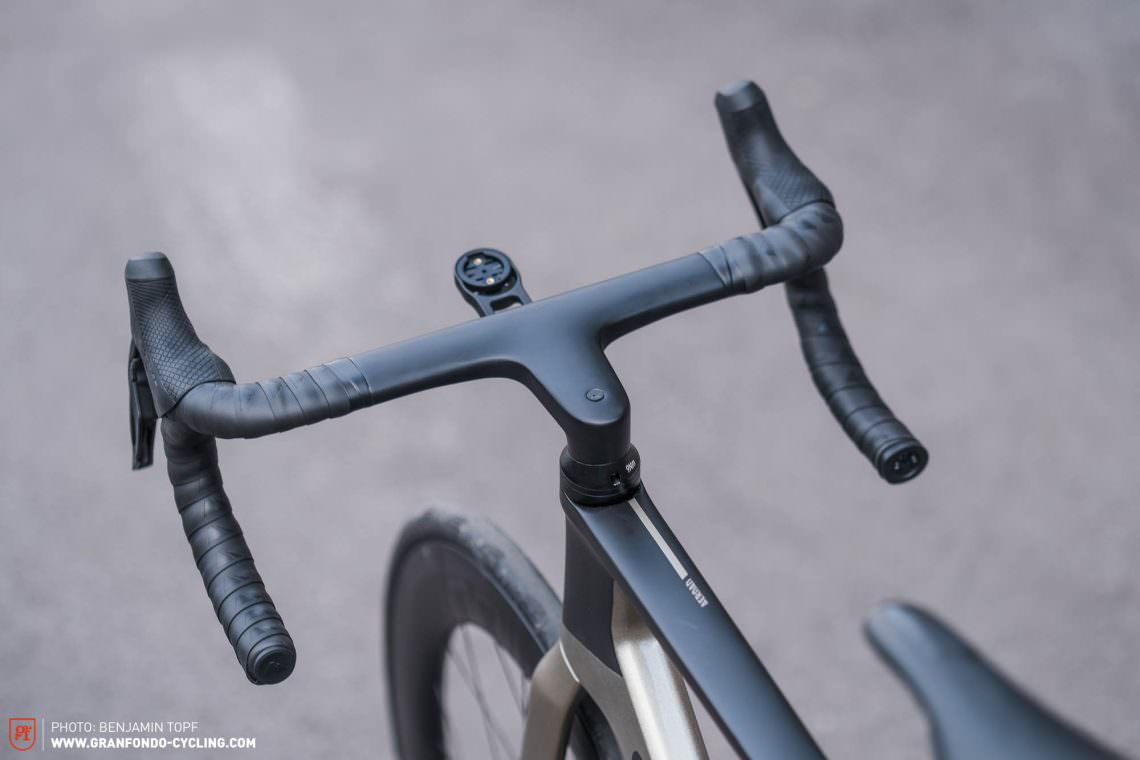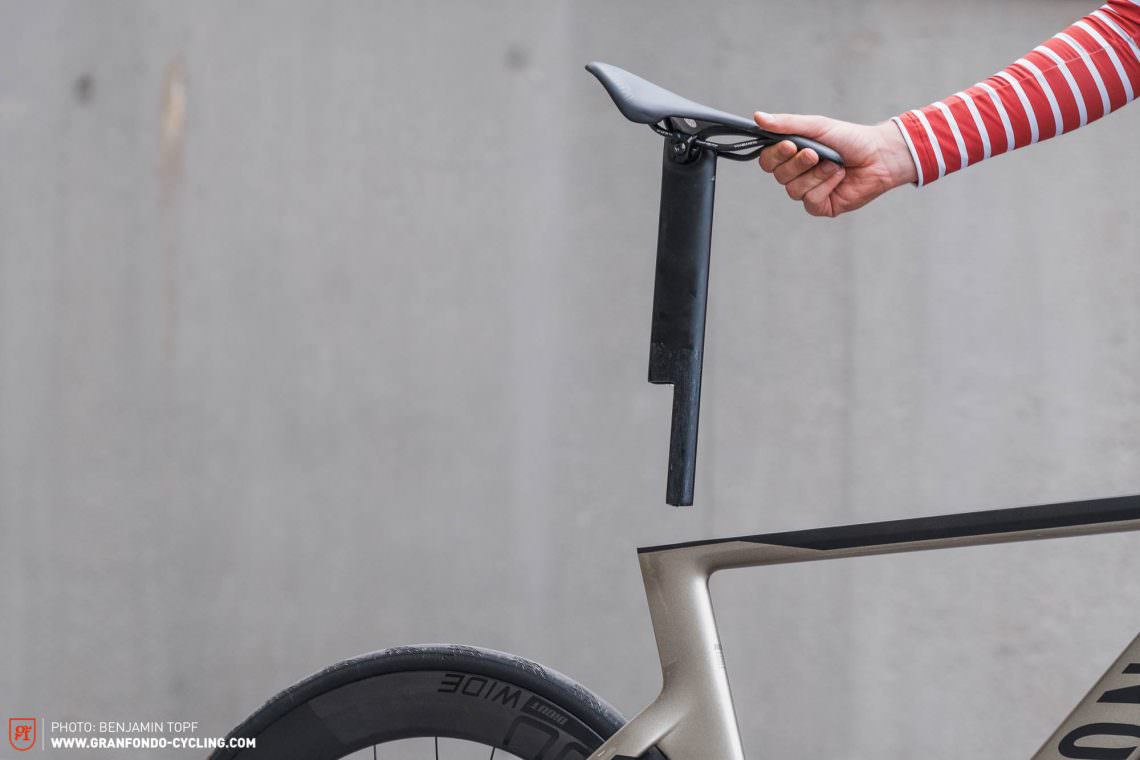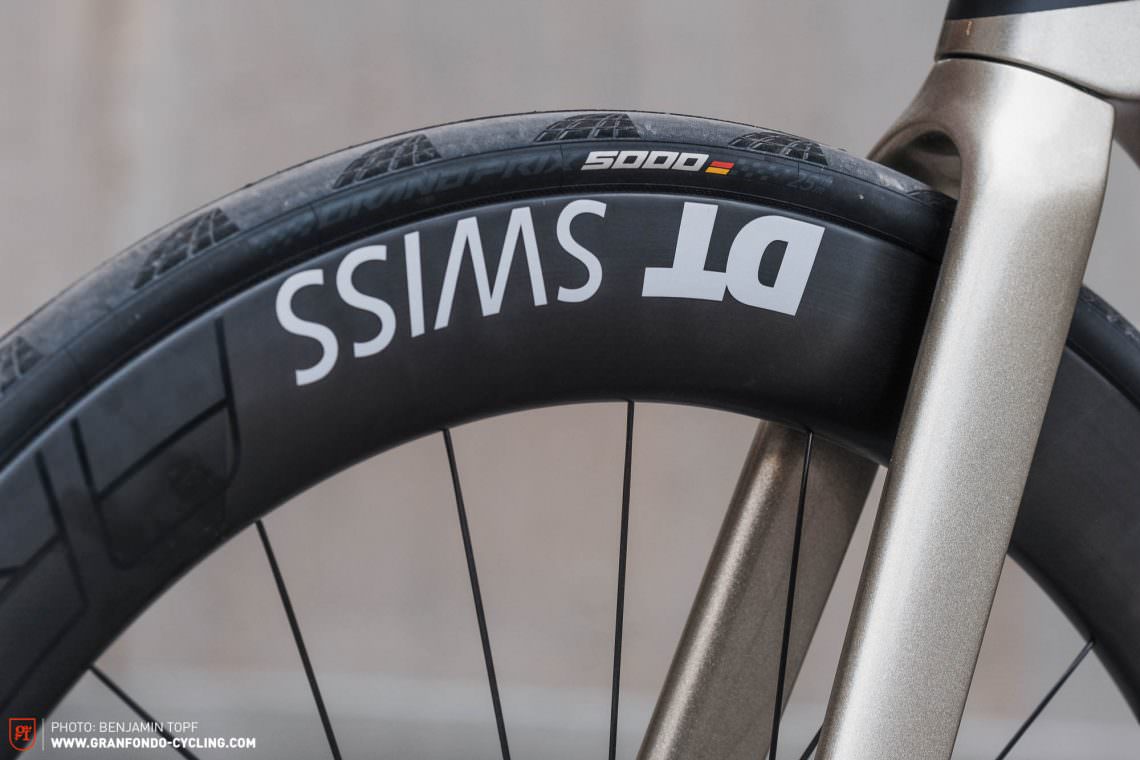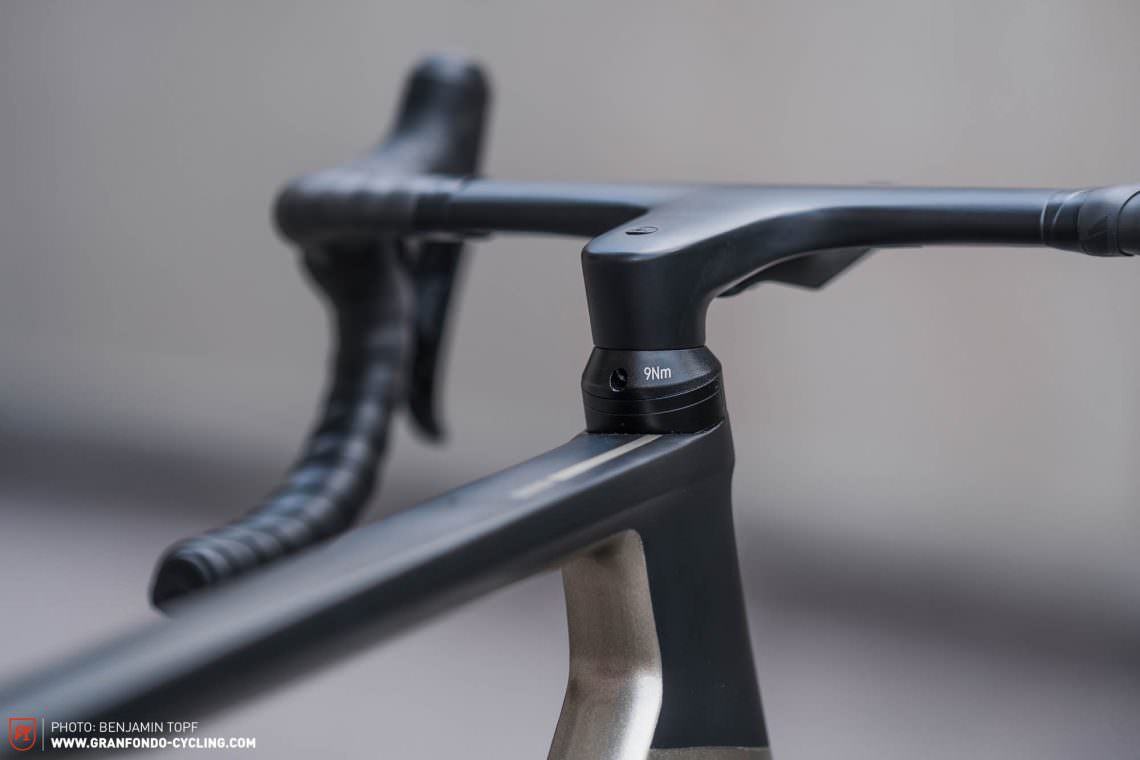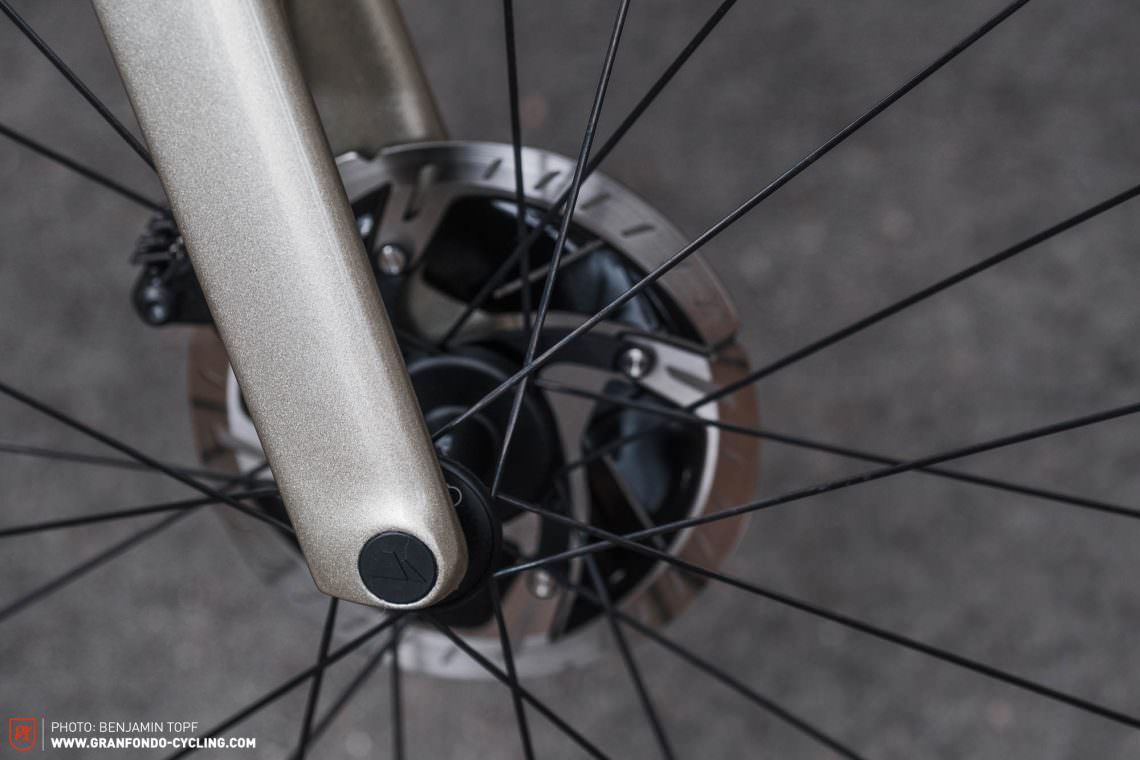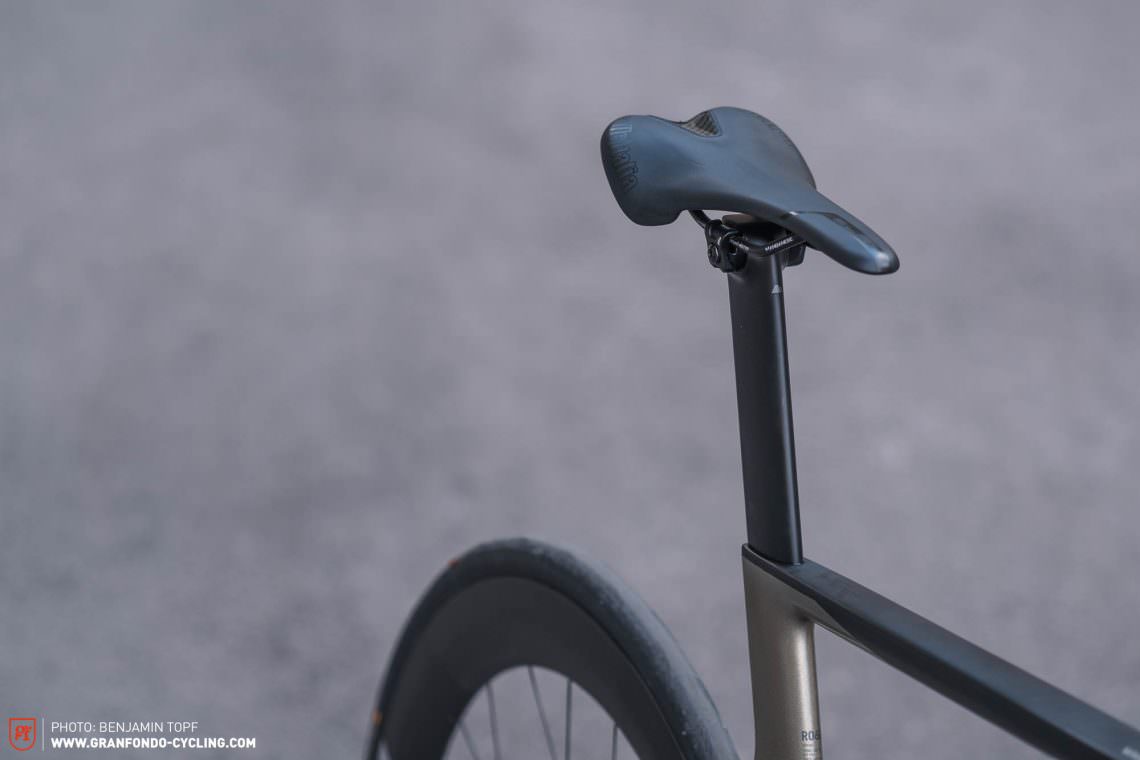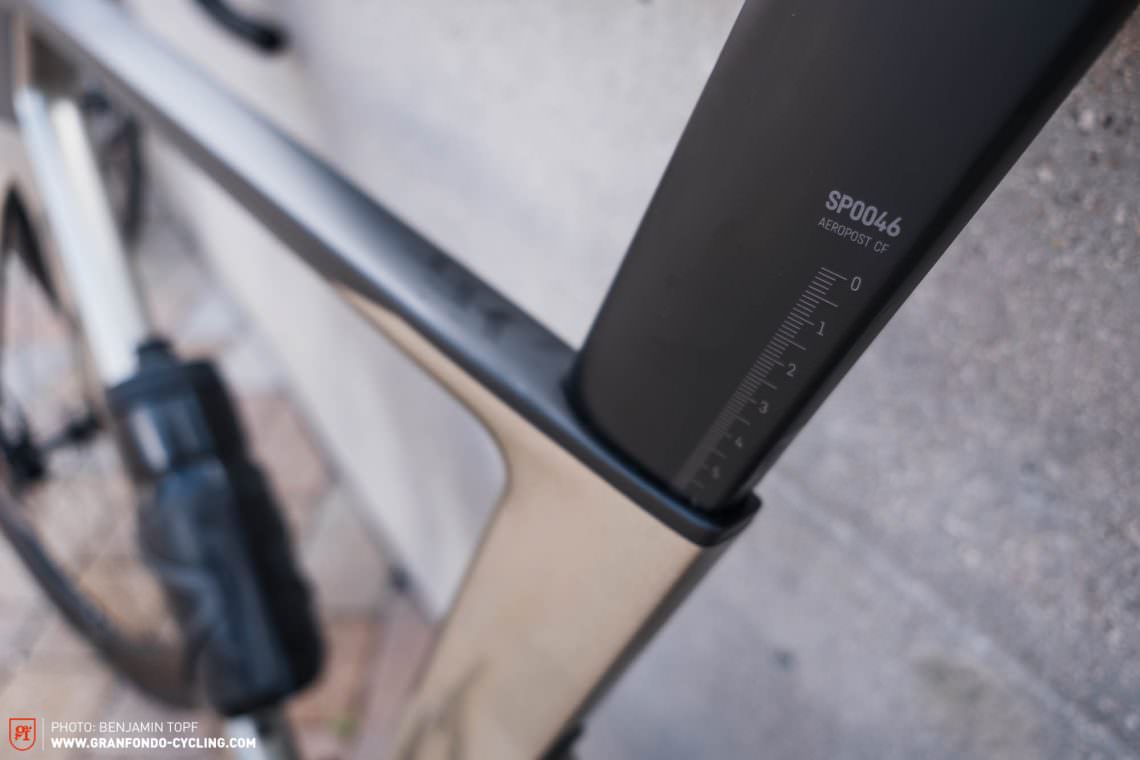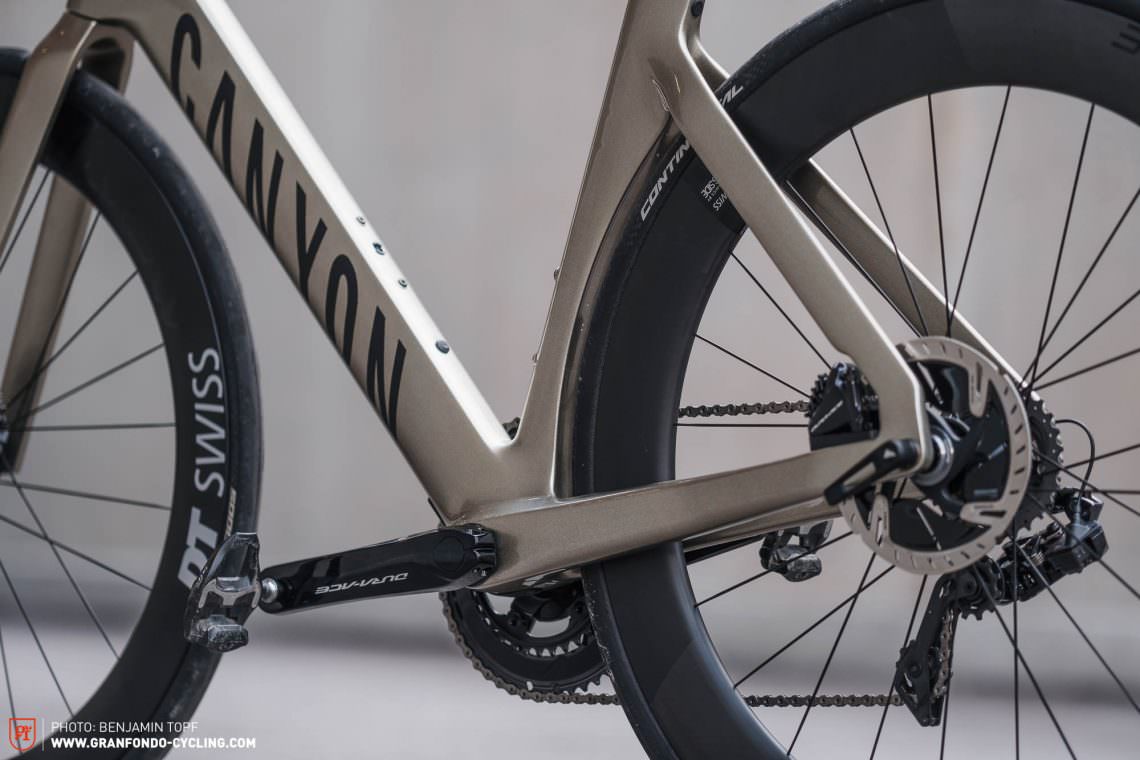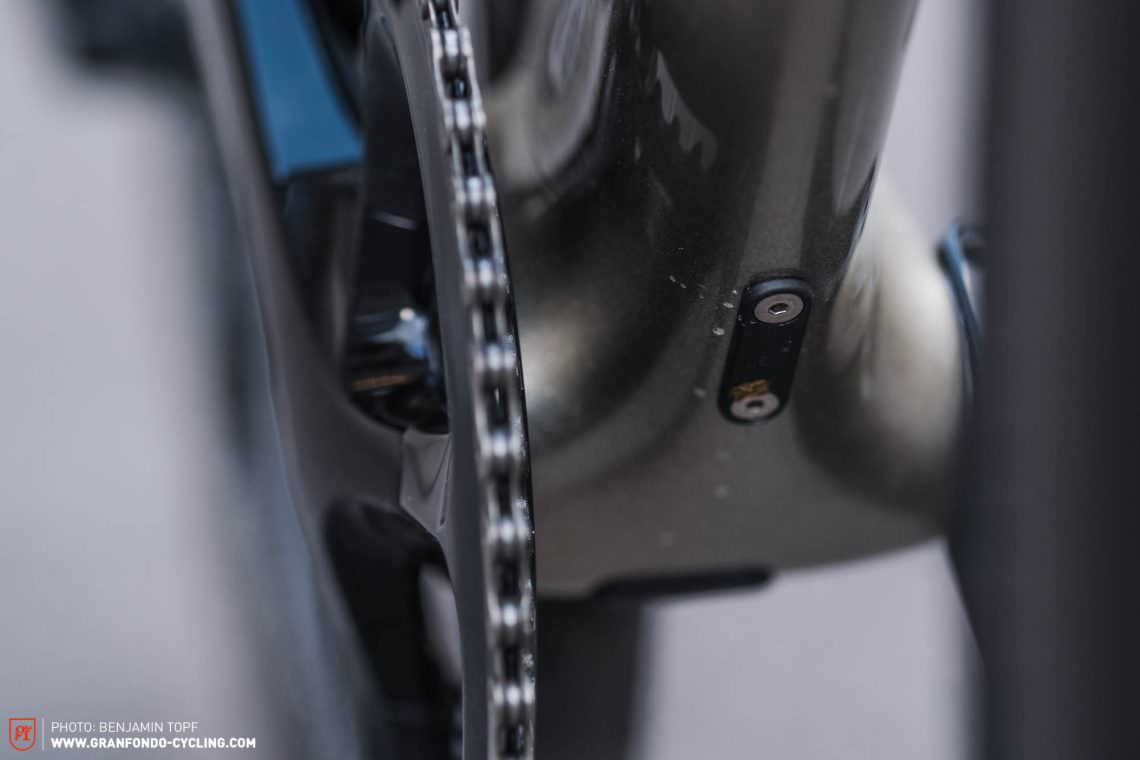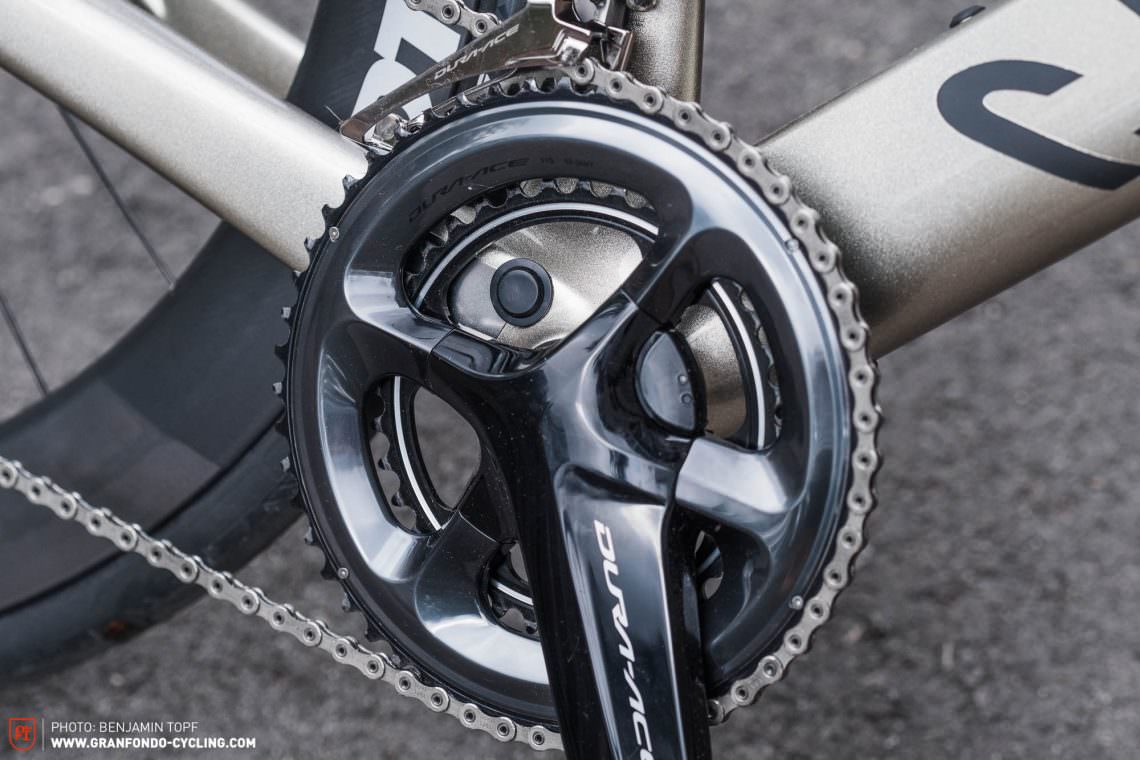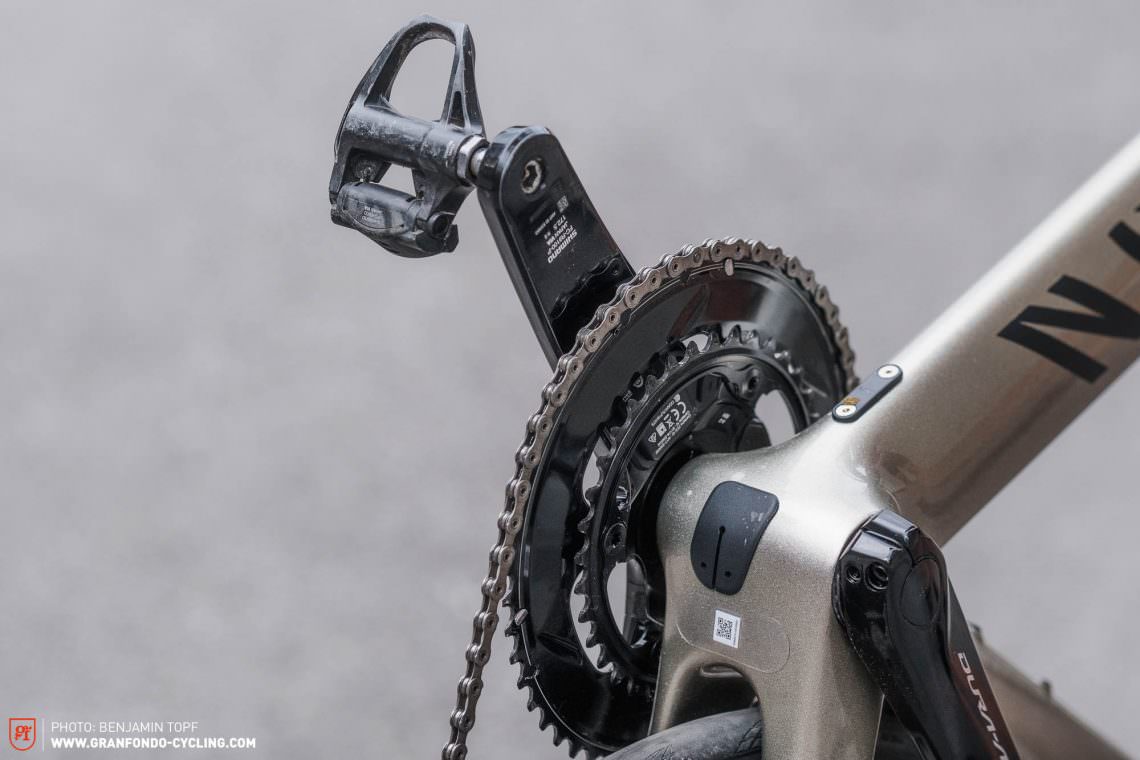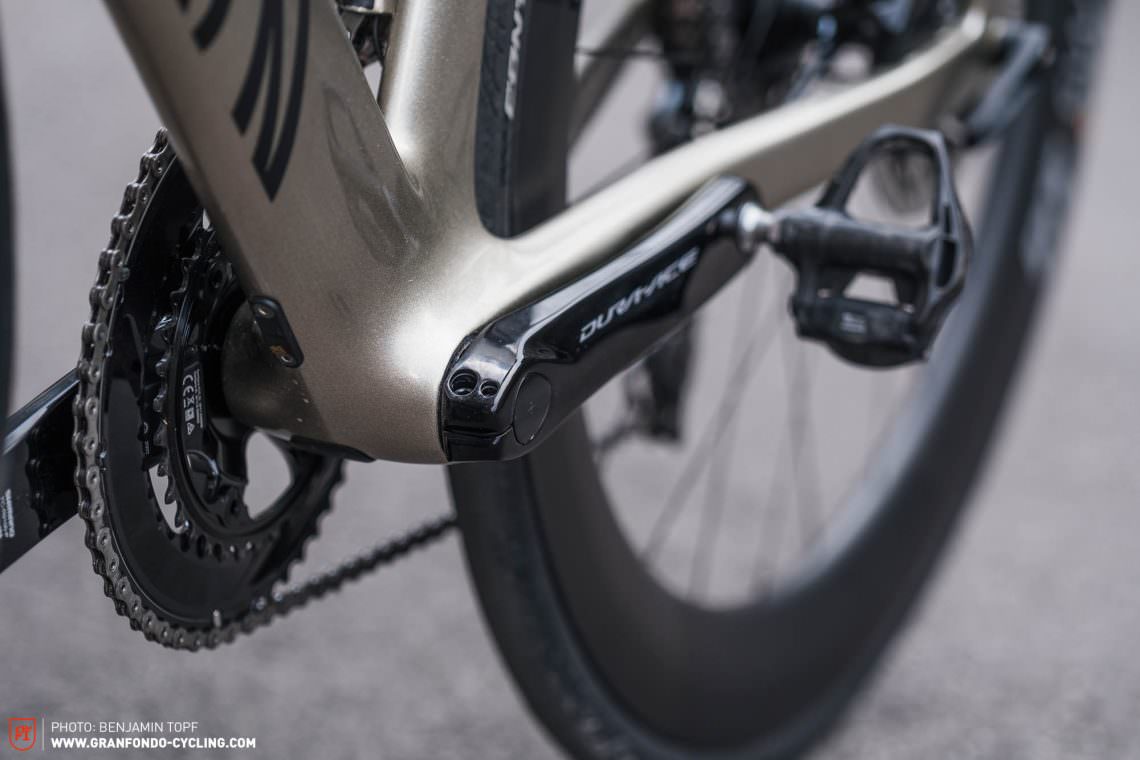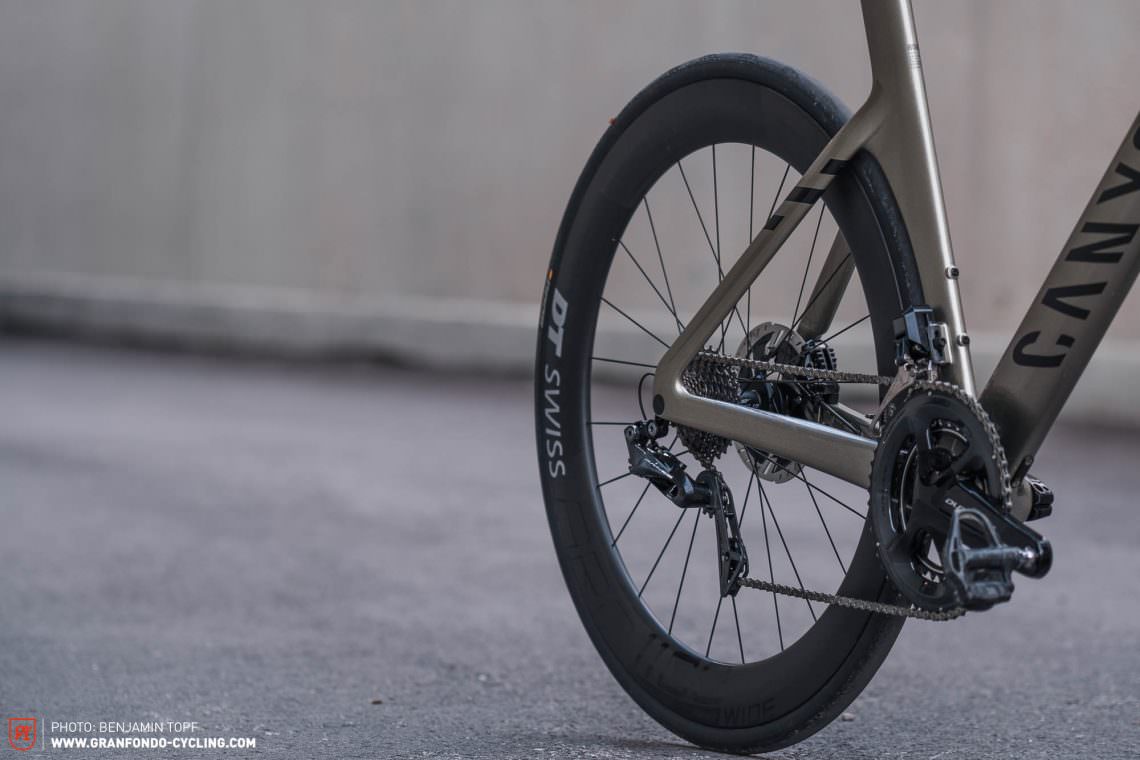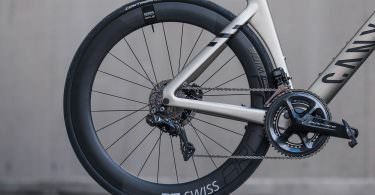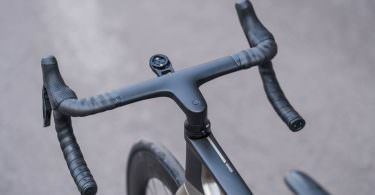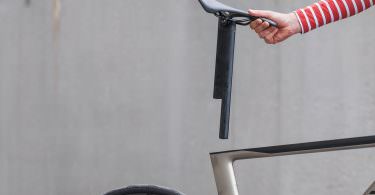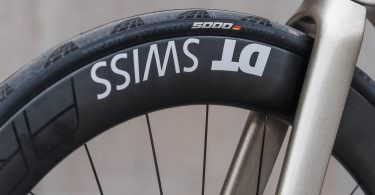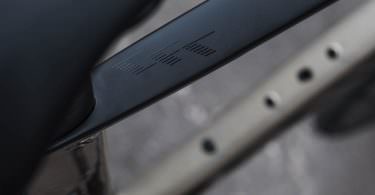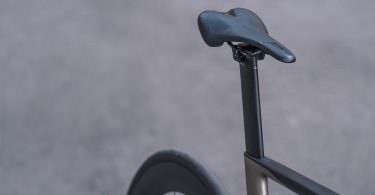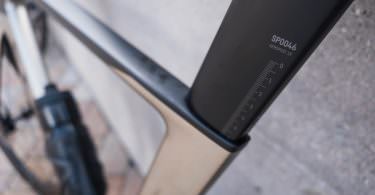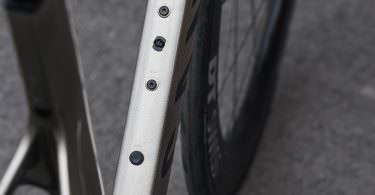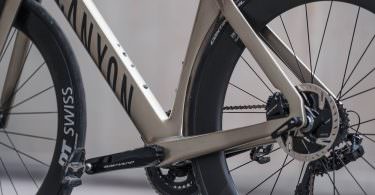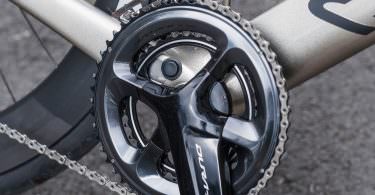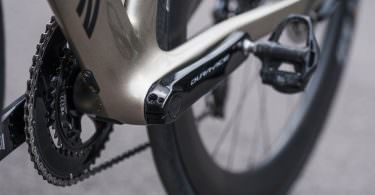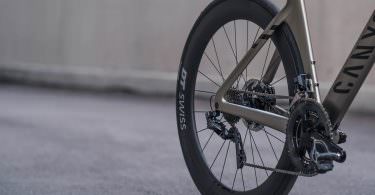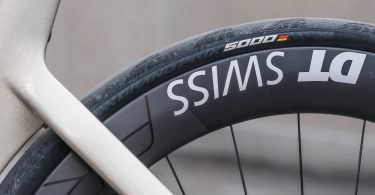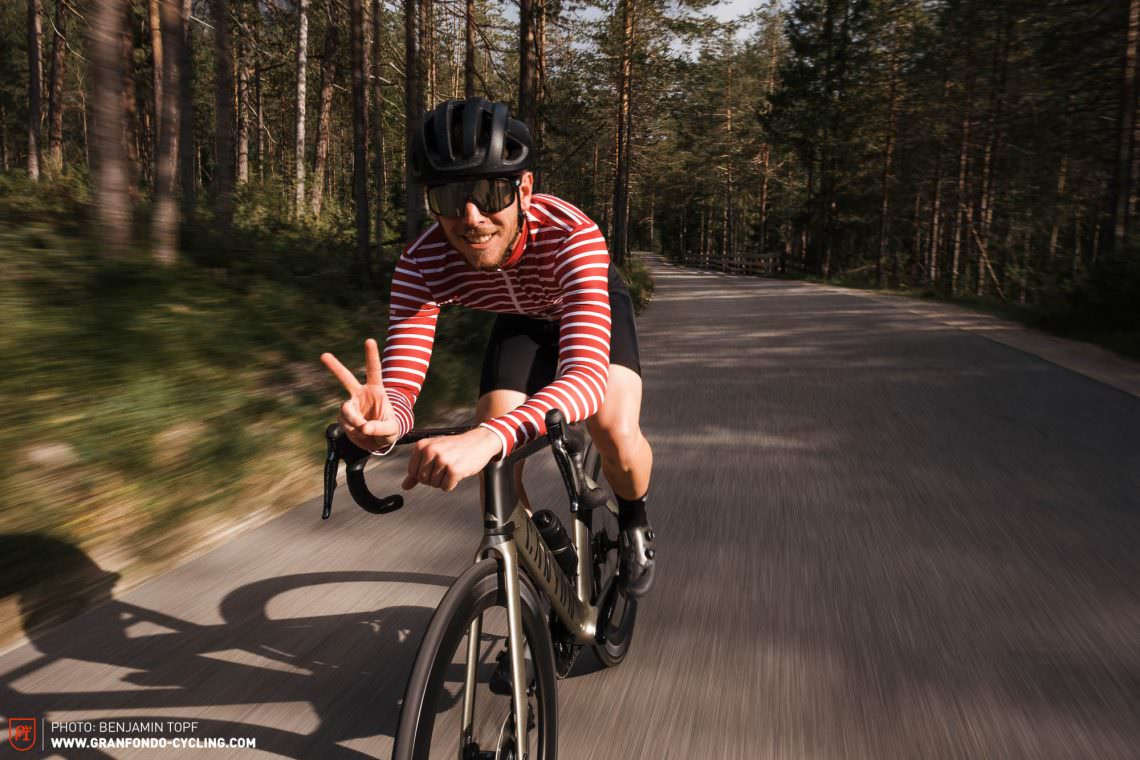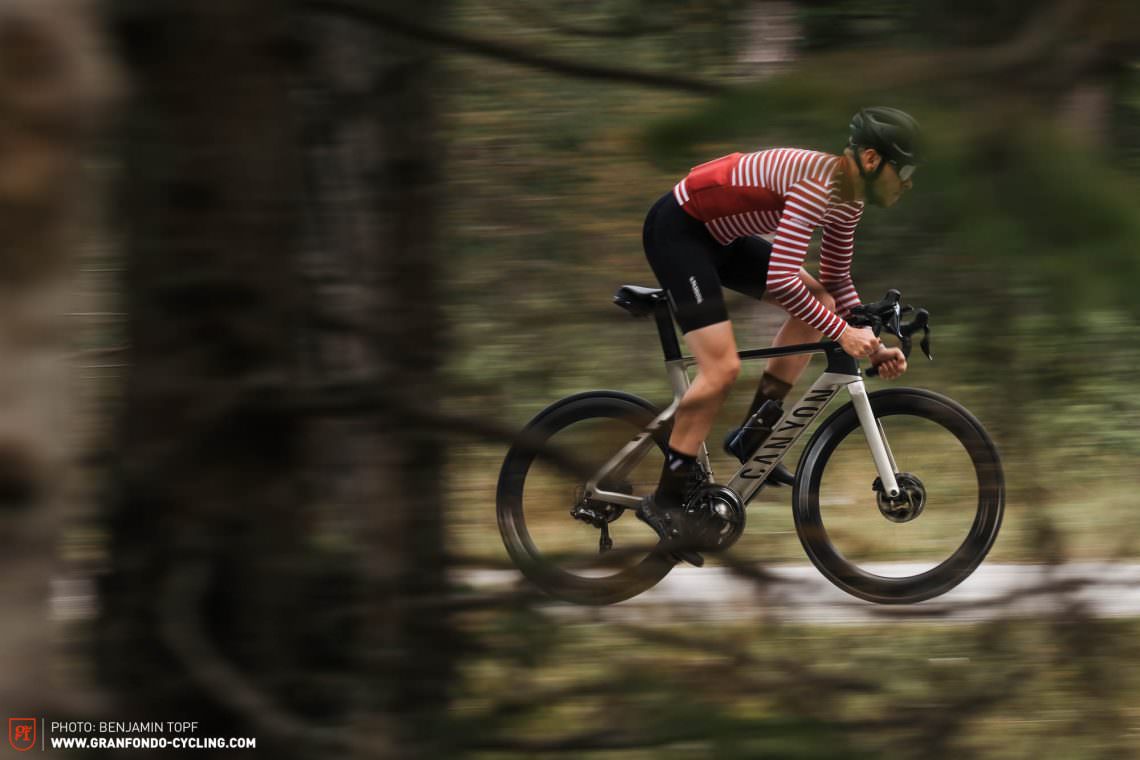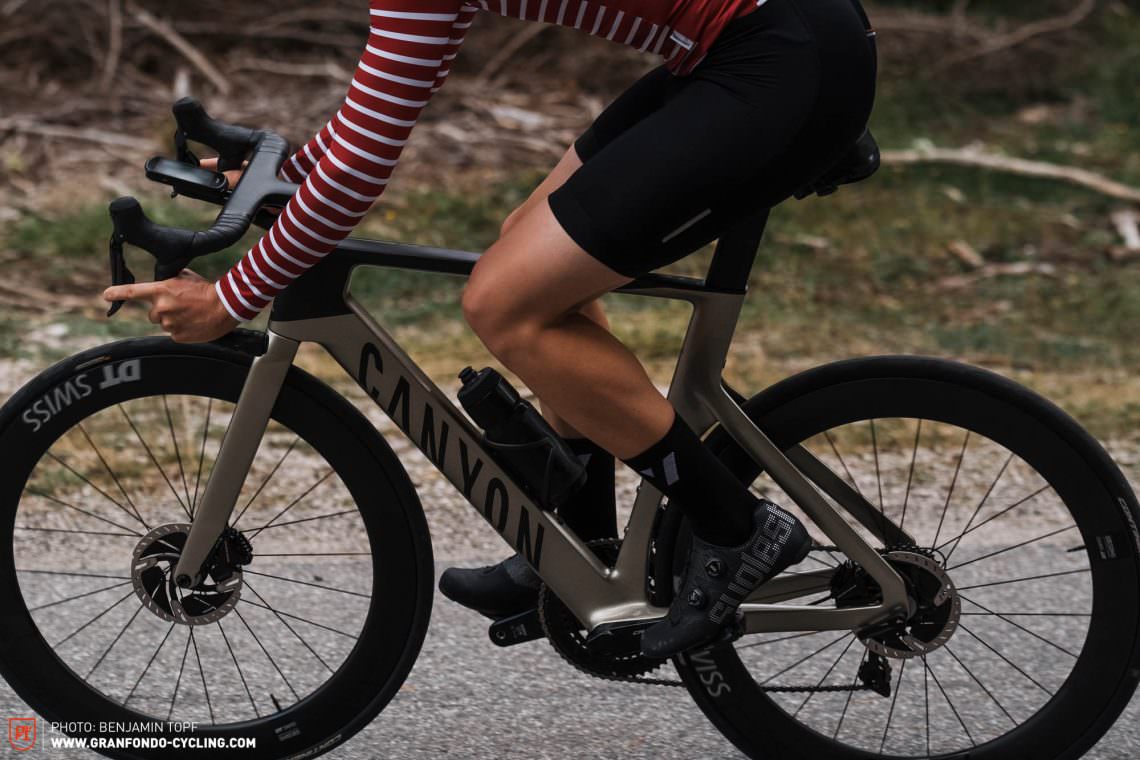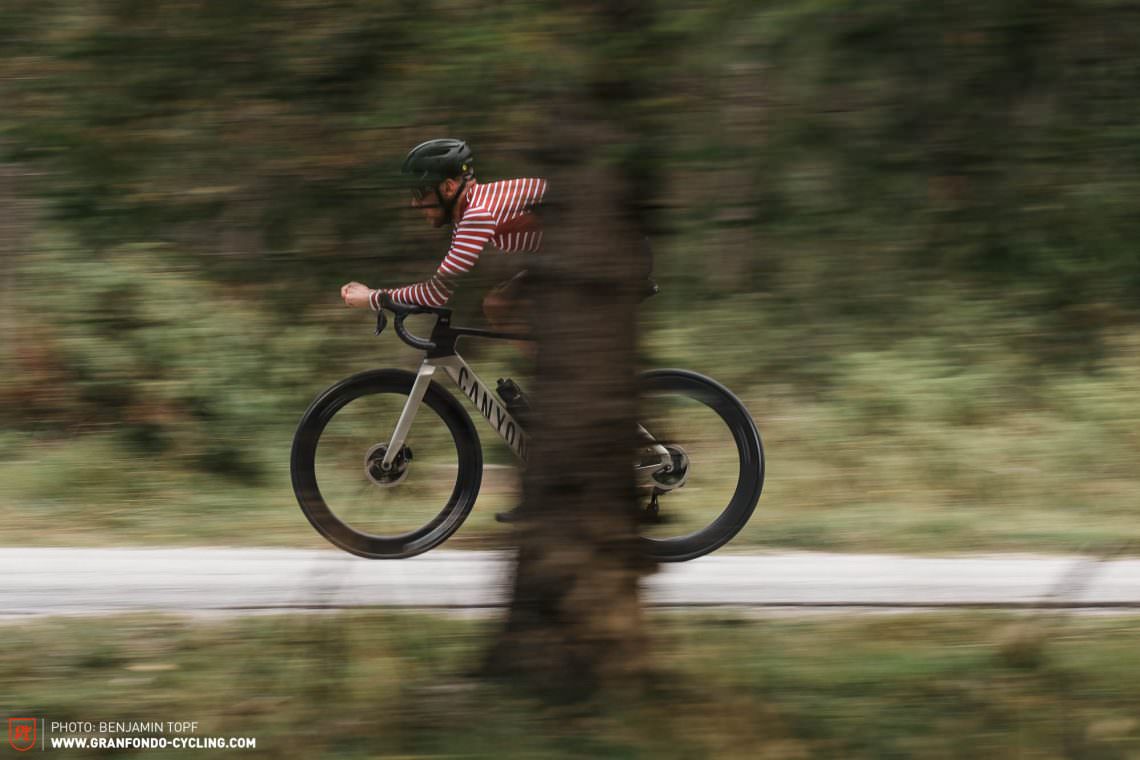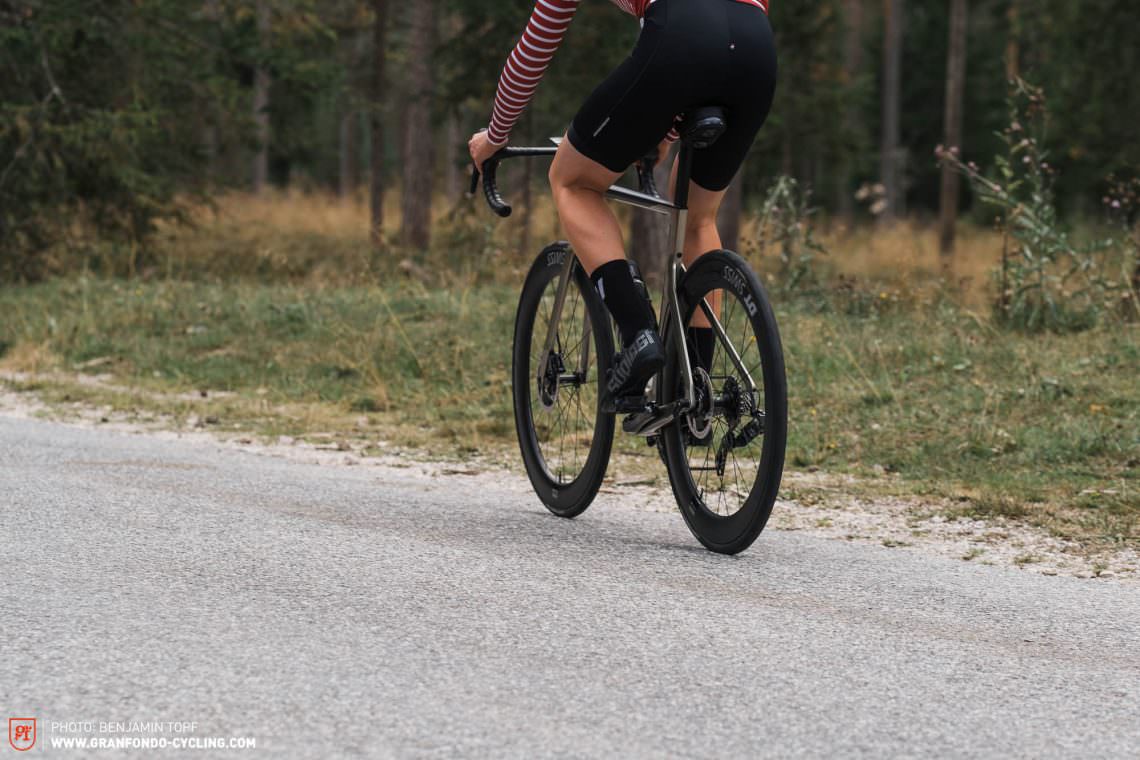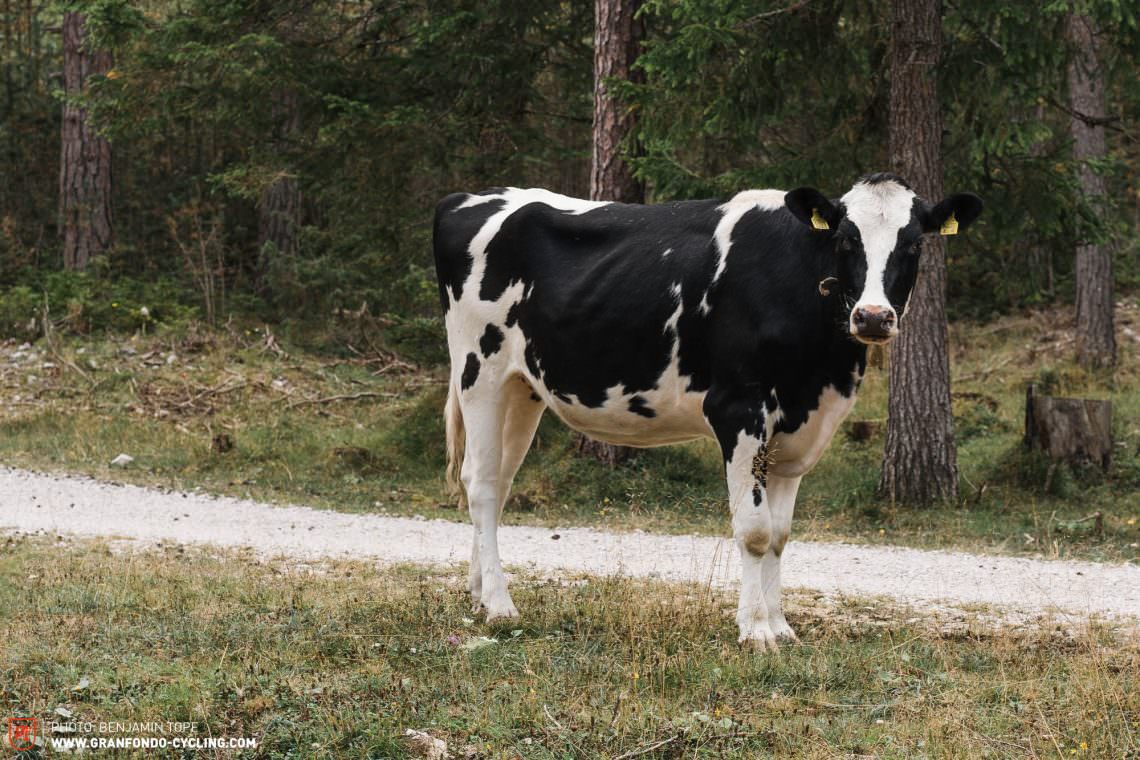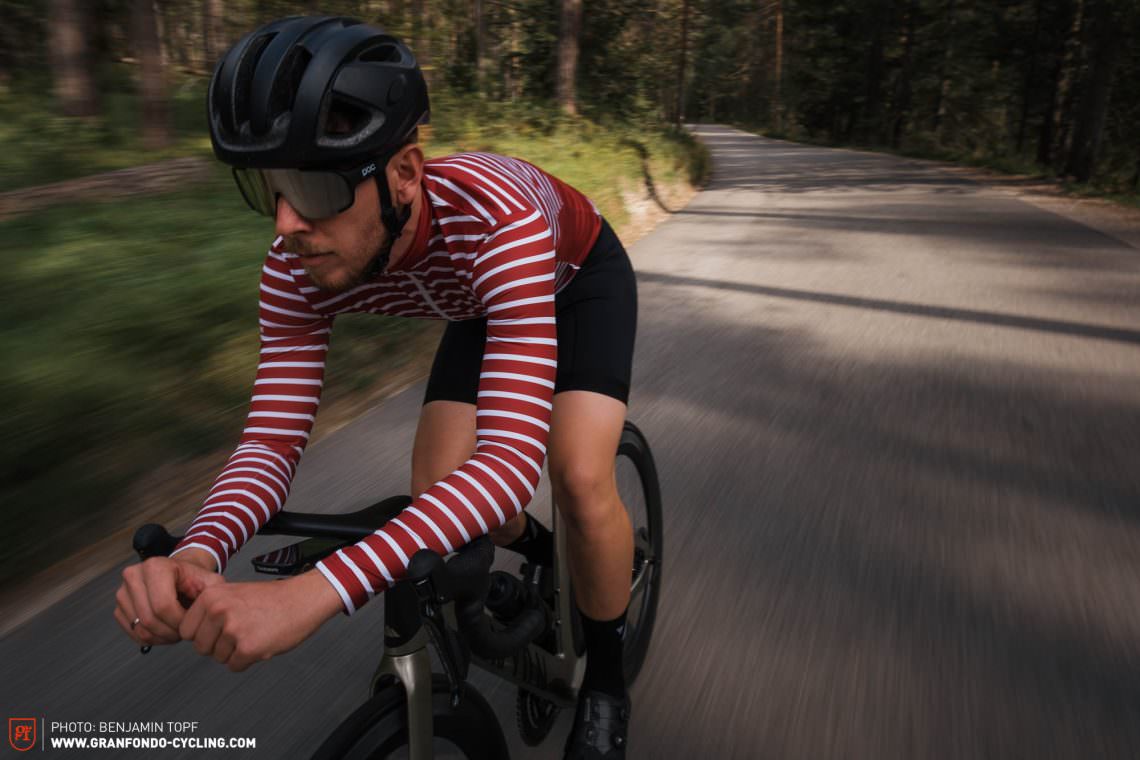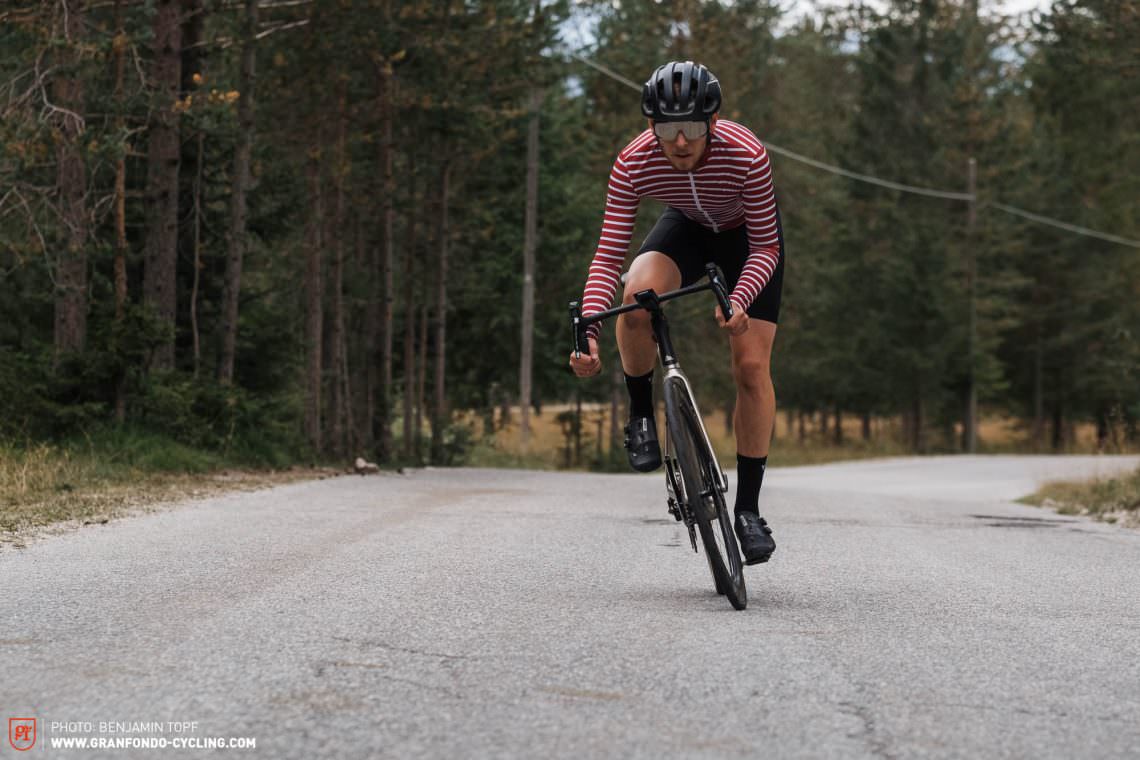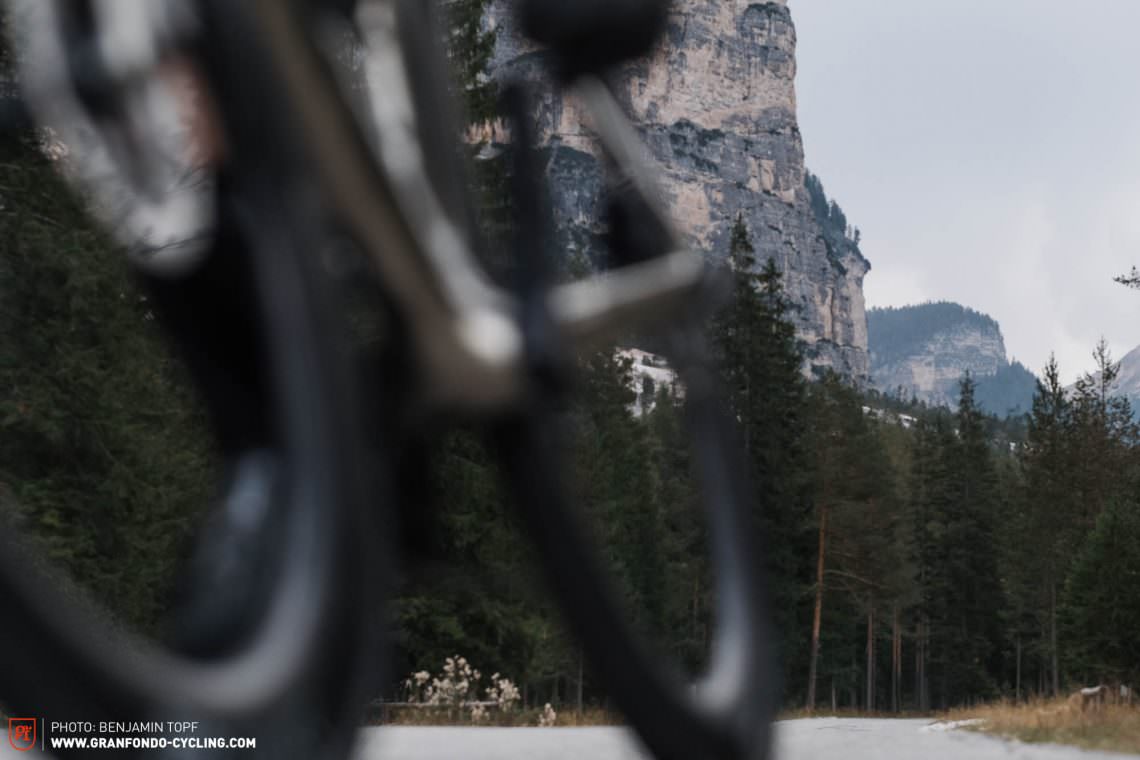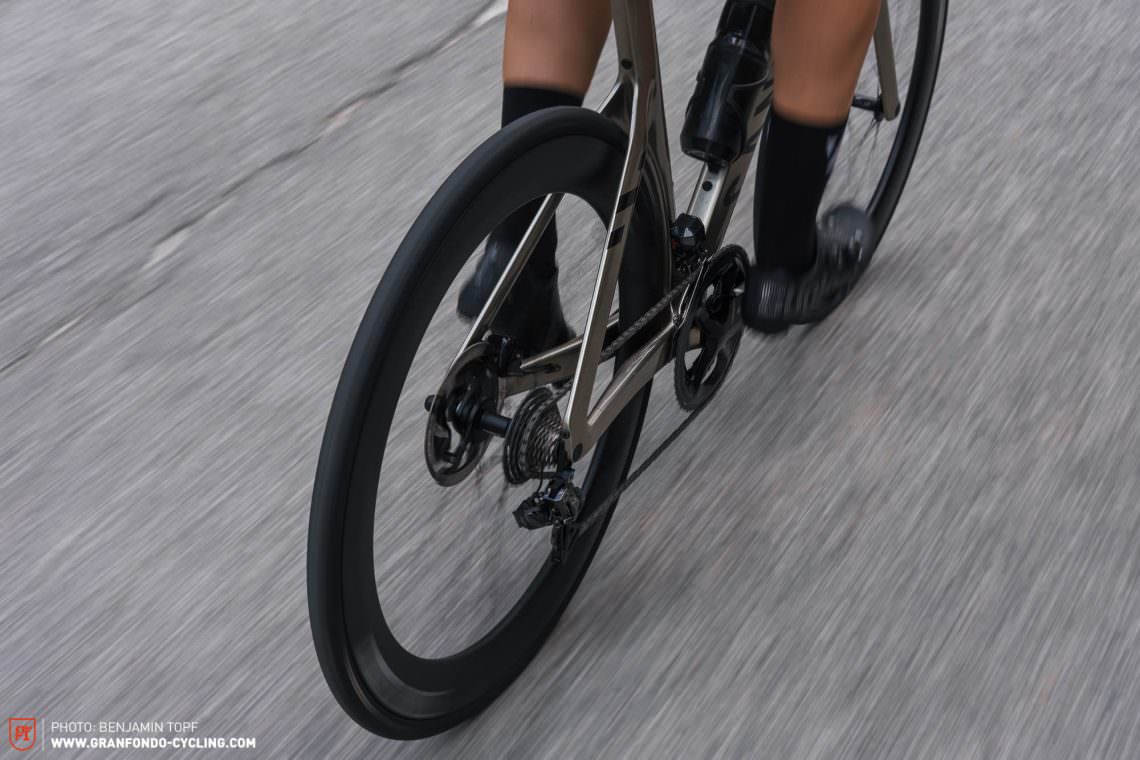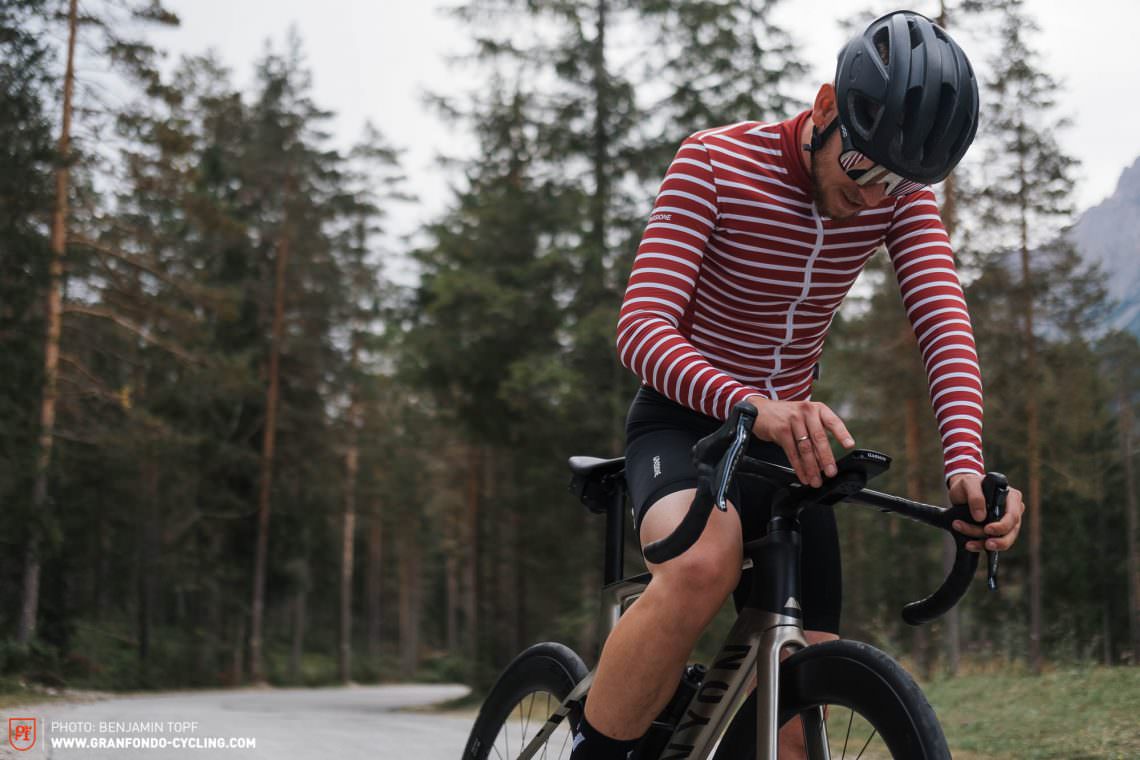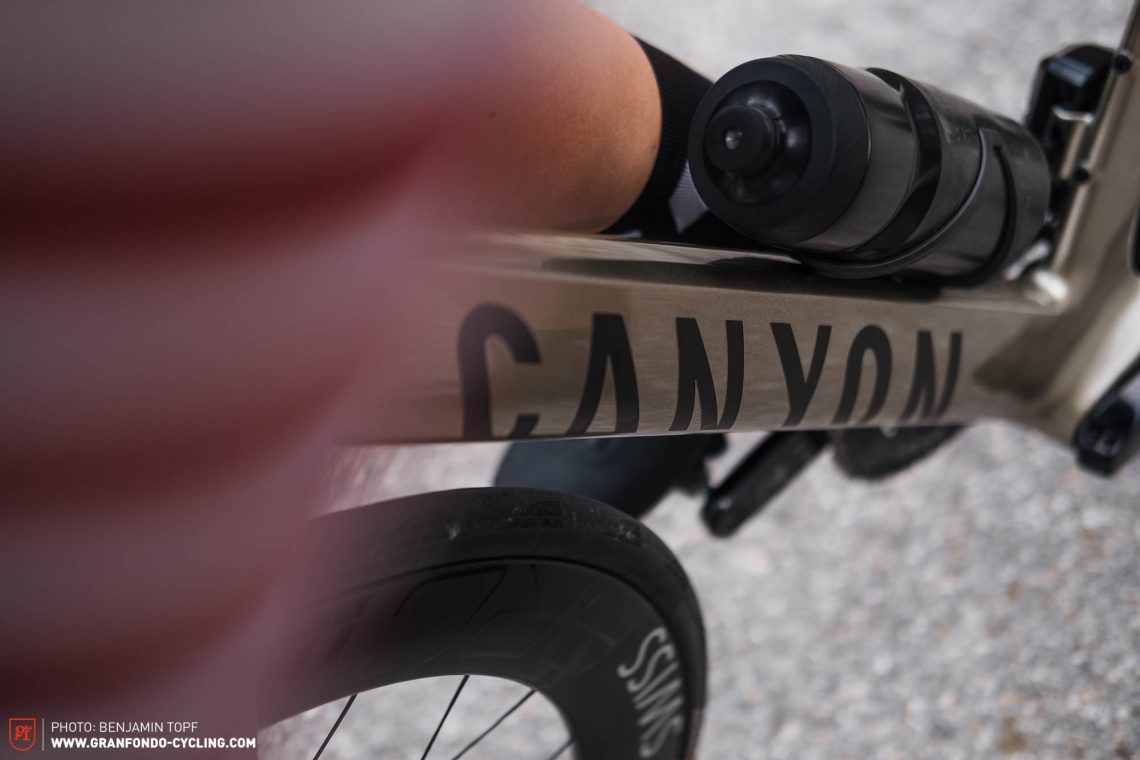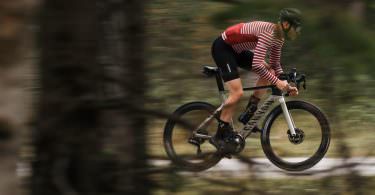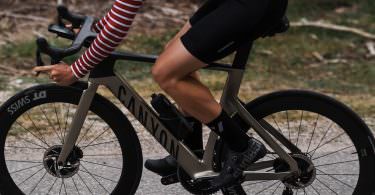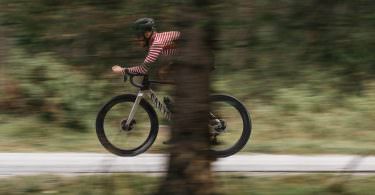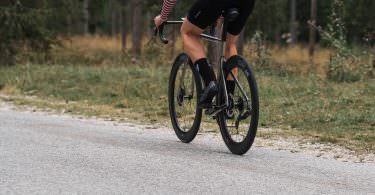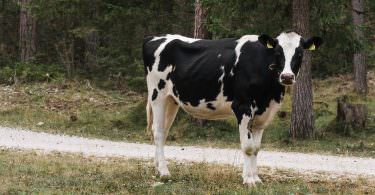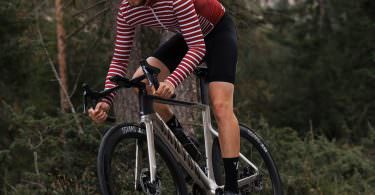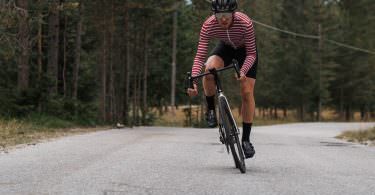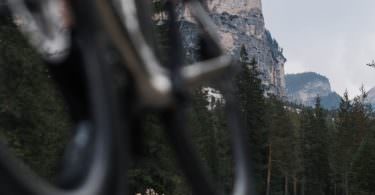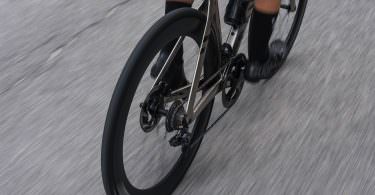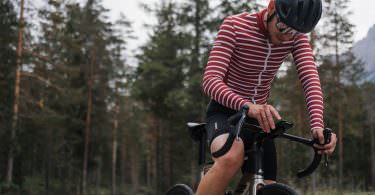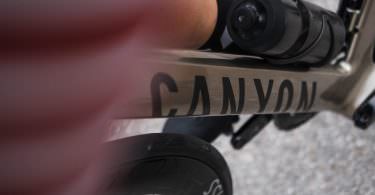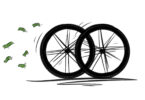After four years in development, Canyon present the Canyon Aeroad CFR road bike for which they reached deep into their bag of tricks. The new flagship aero bike features a folding handlebar, recessed seat post and mixed tires. Will this deliver actual performance benefits or have Canyon missed the mark? Read on to find out!

After the direct to consumer company recently dared to take a detour into urban e-mobility with the Canyon Precede:ON CF 9, they’ve now put their focus back into high-performance road cycling. First released in 2014, the new Canyon Factory Racing (CFR) version of the Aeroad, promises to give you the decisive advantage in the fight for every second on the clock. Canyon seem to be quite sure of themselves and by no means modest when they claim that the Aeroad CFR is the world’s fastest road bike on the market!

What’s new on the Canyon Aeroad CFR?
Even if watt savings, weight reductions and wind tunnel results always sound impressive, with the Aeroad CFR it’s the brand new CP0018 cockpit that steals the show from all the numbers and calculations. Besides costing a lot of time and patience, there must have been a few very smart engineers and designers driving the development. Fully integrated cable routing and one-piece cockpits have been around and proven for several years. So, Canyon asked themselves what has never been done before and could offer buyers real added value? The result is a handlebar whose width can be adjusted via two cockpit wings. The two ends on the right and left side are inserted into a 230 mm wide middle section and secured in place from the bottom with the help of two clamping screws. The handlebar can be adjusted by 40 mm depending on the desired width. For example, the standard handlebar width on the size M is 410 mm, but you can narrow it down to 390 mm or extend it to 430 mm.
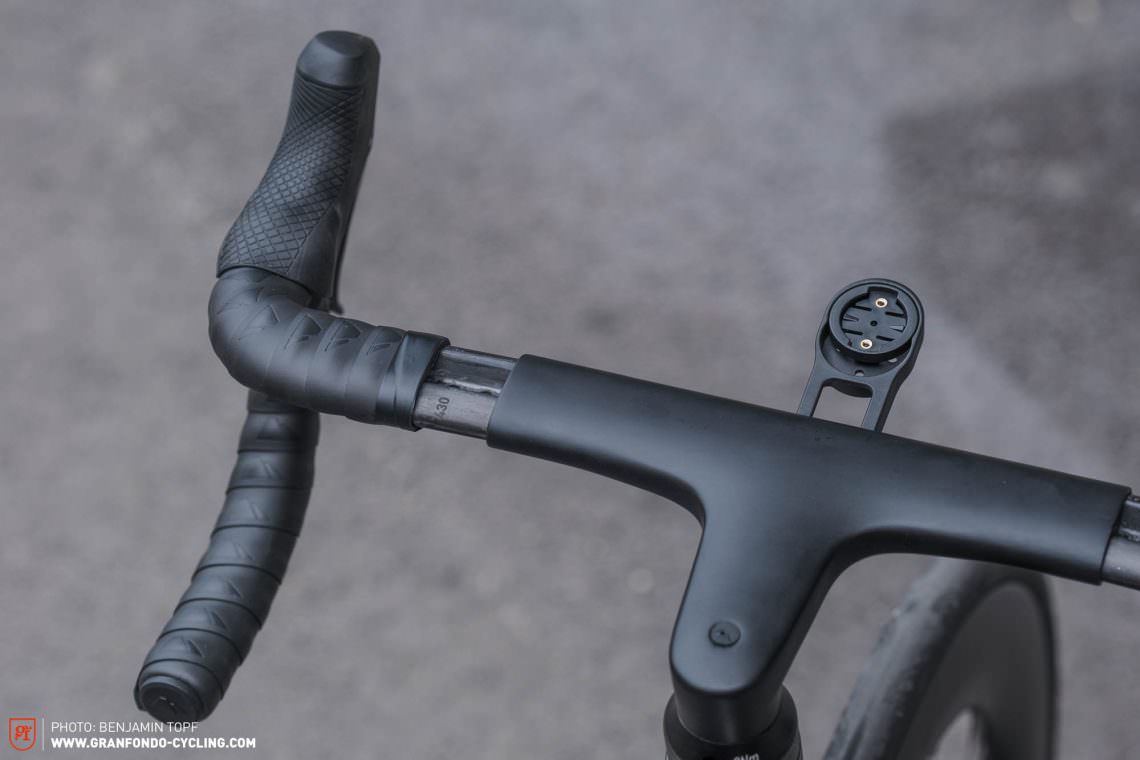

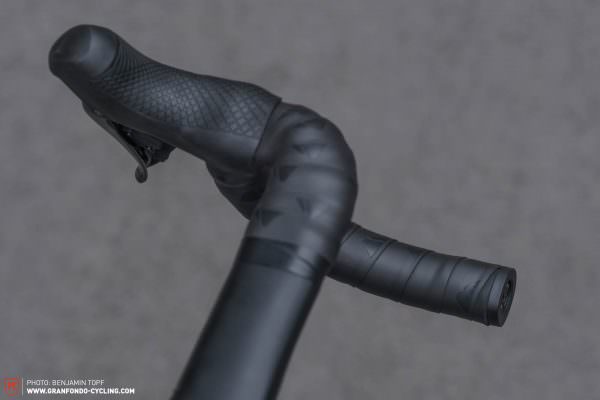

This doesn’t only make the bike much easier to pack and unpack from the transport box it gets delivered, but it also makes the bike’s application more versatile. During the training phase, the Aeroad can be ridden with a 410 or 430 mm wide handlebar for more control and better handling, and then converted to an aerodynamically optimised 390 mm come race day. To widen the cockpit, you’ll have to rewrap the bar with handlebar tape, but if you make it narrower, you’ll simply have to cut off the excess tape.
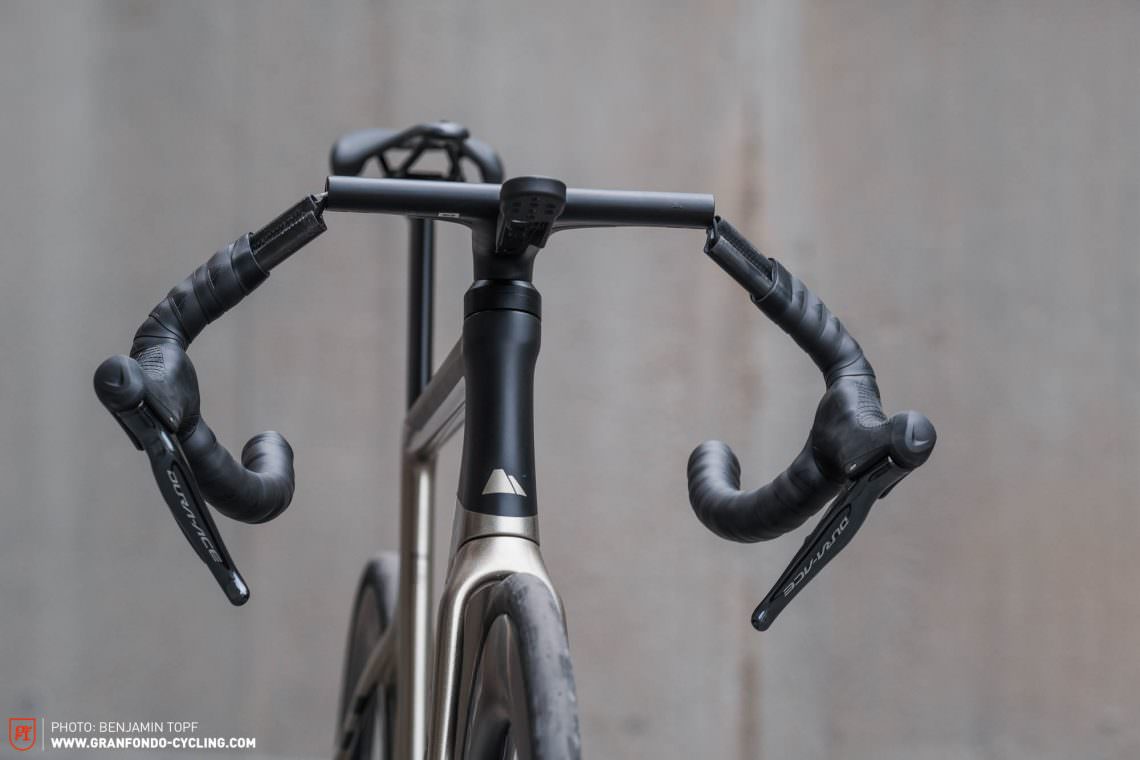
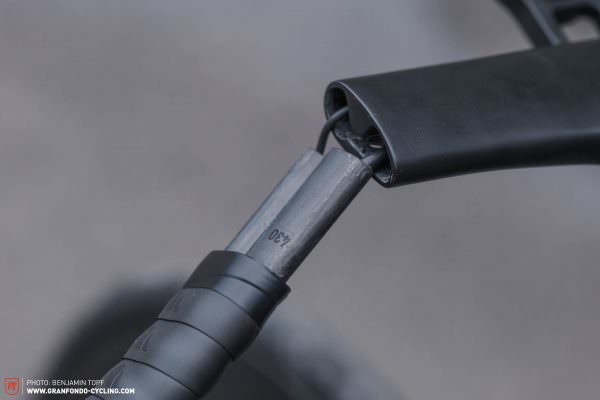
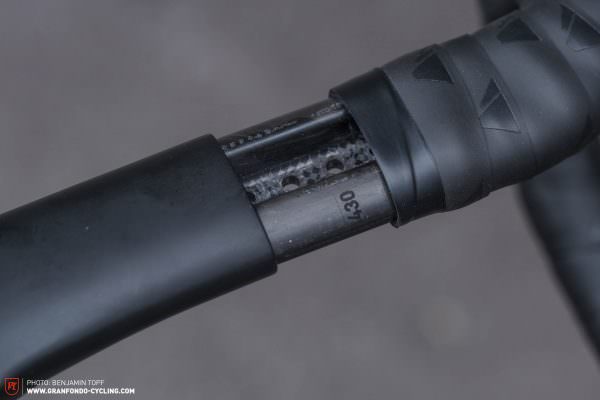
The clamping mechanism is based on the same principle that quill stems have been using for decades. For that, the steerer tube is divided into two parts. The upper end is firmly attached to the stem, measures 1 ¼” in diameter and slides onto the narrower bottom part, which measures 1 ⅛” in diameter. A clamping screw firmly connects both parts with the help of a wedge and it gives you an adjustment range of 15 mm thanks to three 5 mm aluminium spacers. The good thing about not having to cut the steerer tube is that you can always return to the initial setup after testing the various different positions.
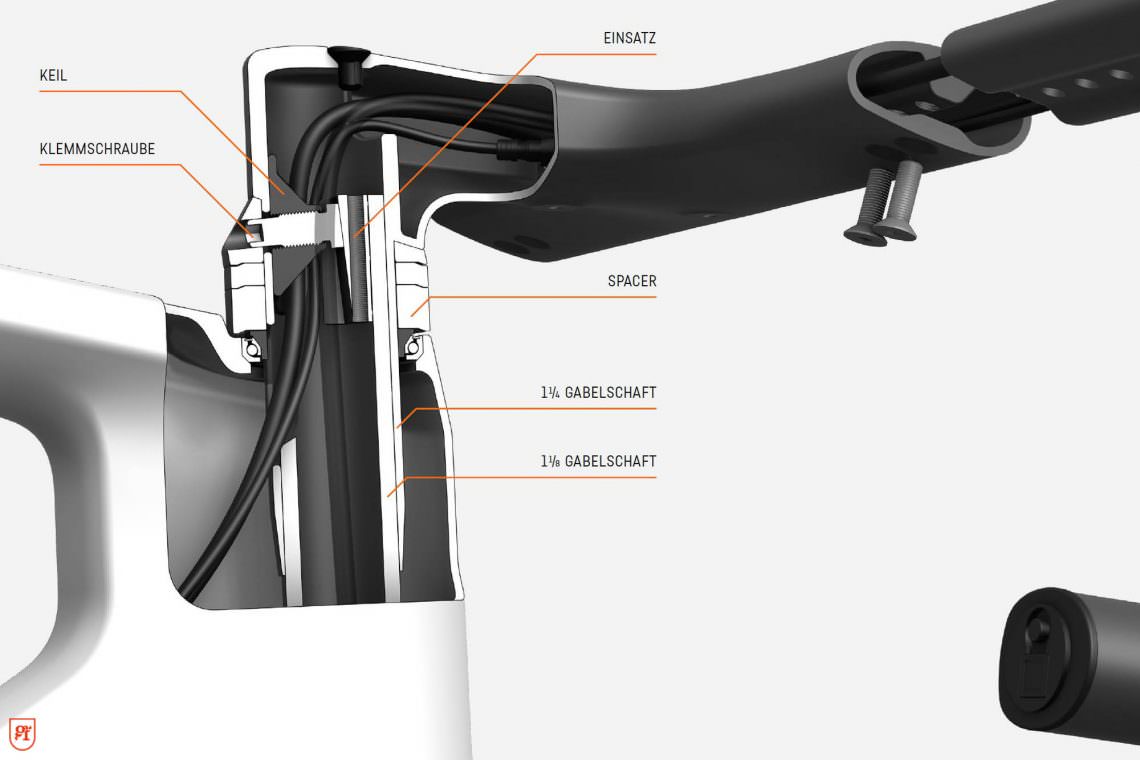
In addition to the cockpit, the seat post has also been revised. The new Canyon SP0046 post weighs 33 g less than its predecessor despite its larger profile. The trick here is that the lower part of the seat post, where it gets clamped, is only half as wide as the part that you can see. This not only reduces weight, but it also makes the seat post more compliant, allowing it to absorb high-frequency vibrations. According to Canyon, the mixed tires also ensure more comfort on the rear. The rear wheel isn’t as affected by aerodynamics, which is why Canyon resorted to using a wide 700 x 28C Continental GP5000 tire on the back. On the front, you’ll find a more streamlined 700 x 25C GP5000 tire for aerodynamic optimisation. Canyon can’t be accused of a lack of attention to detail: even the geometry and the bottom bracket height are specially adapted to this tire size combination, compensating for the additional height of the rear wheel. Anyone looking to make this aero bike even more comfortable can fit tires up to a width of 700 x 30C.
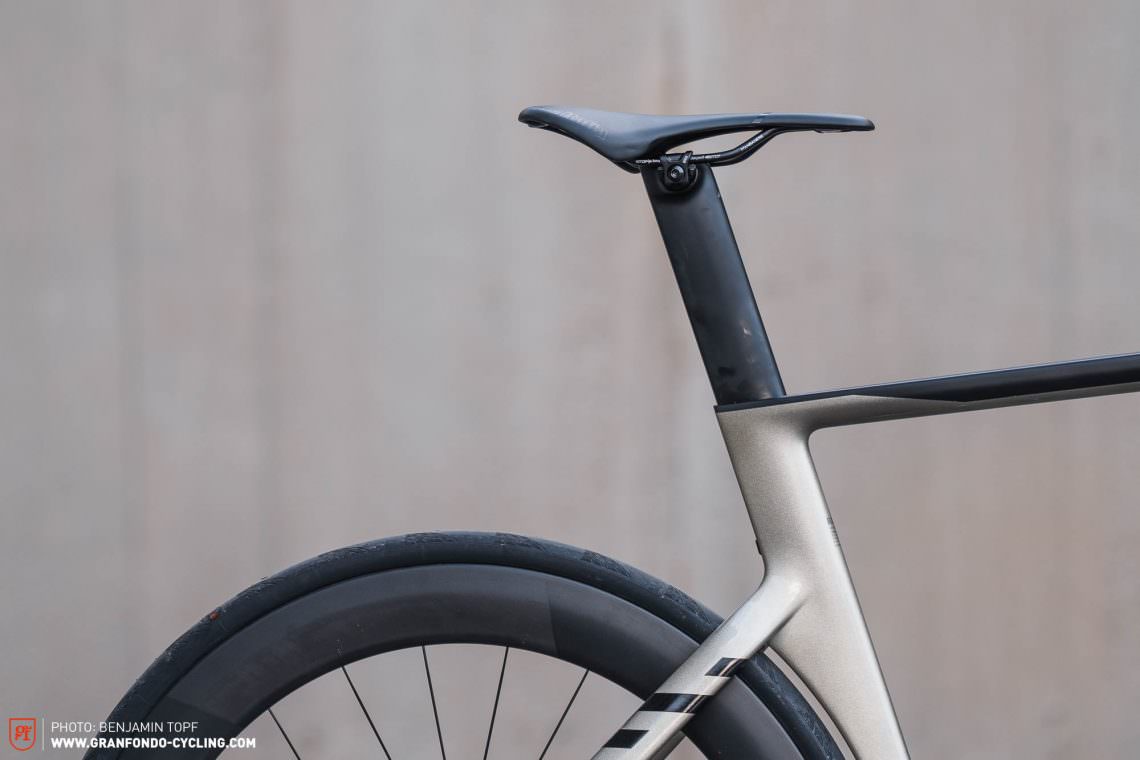
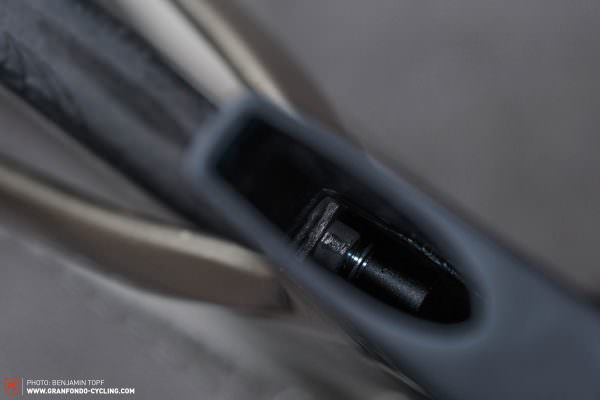
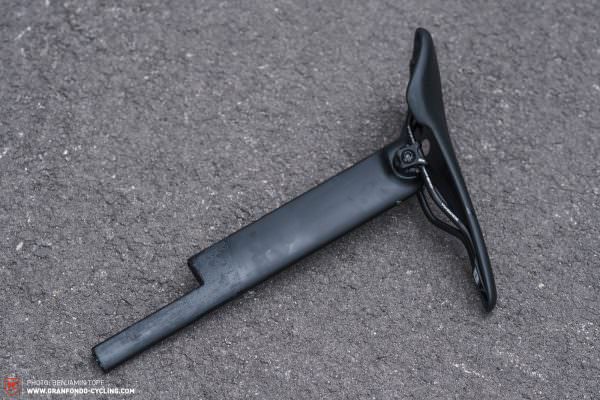
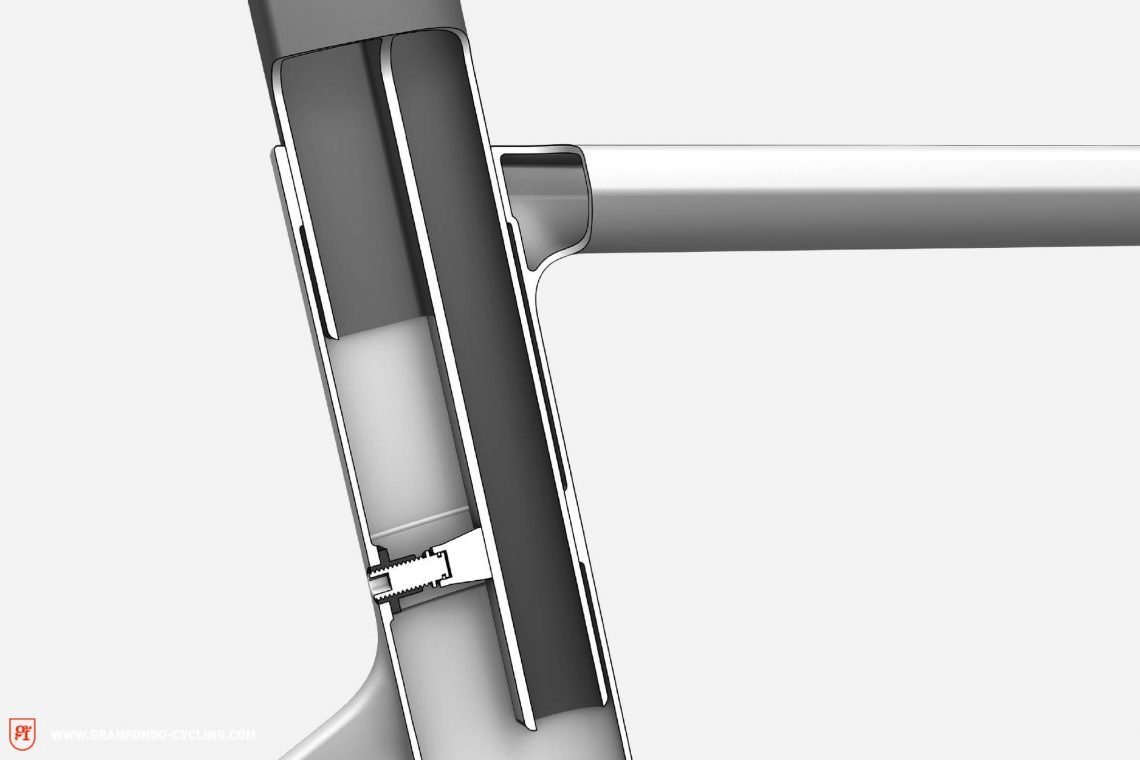
The components in detail
The new Canyon Aeroad is available in three platforms and a total of eight models. As with the recently introduced Canyon Ultimate CFR (article here), the benchmark platform is the Aeroad CFR featuring Canyon’s most advanced carbon layup. In addition to the € 7,499 Aeroad CFR 9 Di2 which we got to review, the Aeroad CFR is also available with a SRAM eTap or Campagnolo Super Record groupset, all equipped with DT Swiss ARC 1100 wheels (click for review), or as a frameset. The CF SLX version of the Aeroad also features the new aero cockpit and electronic drivetrain, available from € 4,999. The entry-level Aeroad CF SL starts at € 3,299, offering mechanical shifting and a two-piece cockpit without fully integrated cable routing. For very short riders from 1.52 m, the Aeroad CF SL is available in an additional 3XS frame size which rolls on 650B wheels.

Drivetrain Shimano DURA-ACE Di2, 2 x 11, 52–36T
Cassette Shimano DURA-ACE 11–28T
BrakesShimano DURA-ACE 160/160 mm
Wheels DT Swiss ARC 1100 Dict 62
Tires Continental GP5000 700 x 25/28C v/h
Seat postCanyon SP0046
Handlebar Canyon CP0018-Cockpit, 390-430 mm
Stem Canyon CP0018-Cockpit, 100 mm
Weight 7.35 kg in size 56
Price € 7,499
Availability as of now
Sure, € 7,499 is a lot of money, especially for a direct to consumer brand like Canyon who have regularly offered flagship models for less in the past. With the new CFR line, Canyon have broken away from their previous pricing policy, giving their product managers and engineers free rein to push the limits and squeeze out the maximum performance possible. The price given for this build, which makes perfect sense for the intended application, isn’t unreasonable. The extensive product range leaves nothing to be desired, with models in many different price ranges. They even thought of the more vertically challenged among us. Thumbs up for inclusivity!

The geometry of the Canyon Aeroad
| Size | 3XS* | 2XS | XS | S | M | L | XL | 2XL |
|---|---|---|---|---|---|---|---|---|
| Seat tube | 413 mm | 443 mm | 473 mm | 503 mm | 533 mm | 563 mm | 593 mm | 623 mm |
| Top tube | 501 mm | 520 mm | 533 mm | 549 mm | 559 mm | 572 mm | 598 mm | 613 mm |
| Head tube | 103 mm | 89/121* mm | 109 mm | 126 mm | 147 mm | 167 mm | 193 mm | 211 mm |
| Head angle | 71.00° | 71.50° | 71.50° | 72.75° | 73.25° | 73.25° | 73.50° | 73.75° |
| Seat angle | 73.5° | 73.5° | 73.5° | 73.5° | 73.5° | 73.5° | 73.5° | 73.5° |
| Chainstay | 405 mm | 410/405* mm | 410 mm | 410 mm | 410 mm | 410 mm | 410 mm | 410 mm |
| Wheelbase | 951 mm | 972/967* mm | 977 mm | 984 mm | 989 mm | 1,002 mm | 1,025 mm | 1,038 mm |
| Reach | 358 mm | 372 mm | 378 mm | 390 mm | 393 mm | 401 mm | 419 mm | 429 mm |
| Stack | 483 mm | 498 mm | 521 mm | 539 mm | 560 mm | 580 mm | 606 mm | 624 mm |
* Aeroad CF SL only
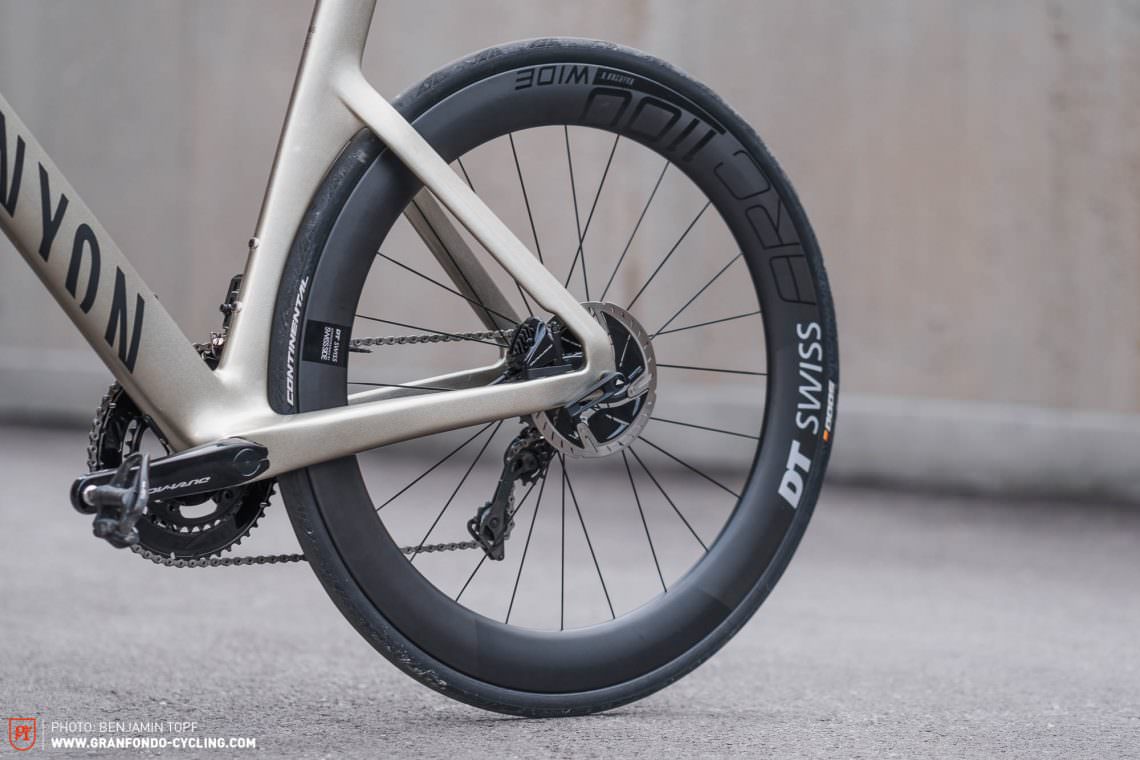
If you look at the geometry table, you can see that the geometry of the new Canyon Aeroad has been somewhat relaxed. In size M, the stack has been increased by 9 mm and the reach has been reduced by 5 mm. This should allow more riders to get into an aerodynamic position on the bike and enjoy the aero advantages of the Aeroad. Measured at the cockpit, the updated geometry corresponds to that of the Canyon Ultimate. Canyon have developed a second cockpit with a lower profile for professional road racers who need a more aggressive riding position and can maintain it for a long time.
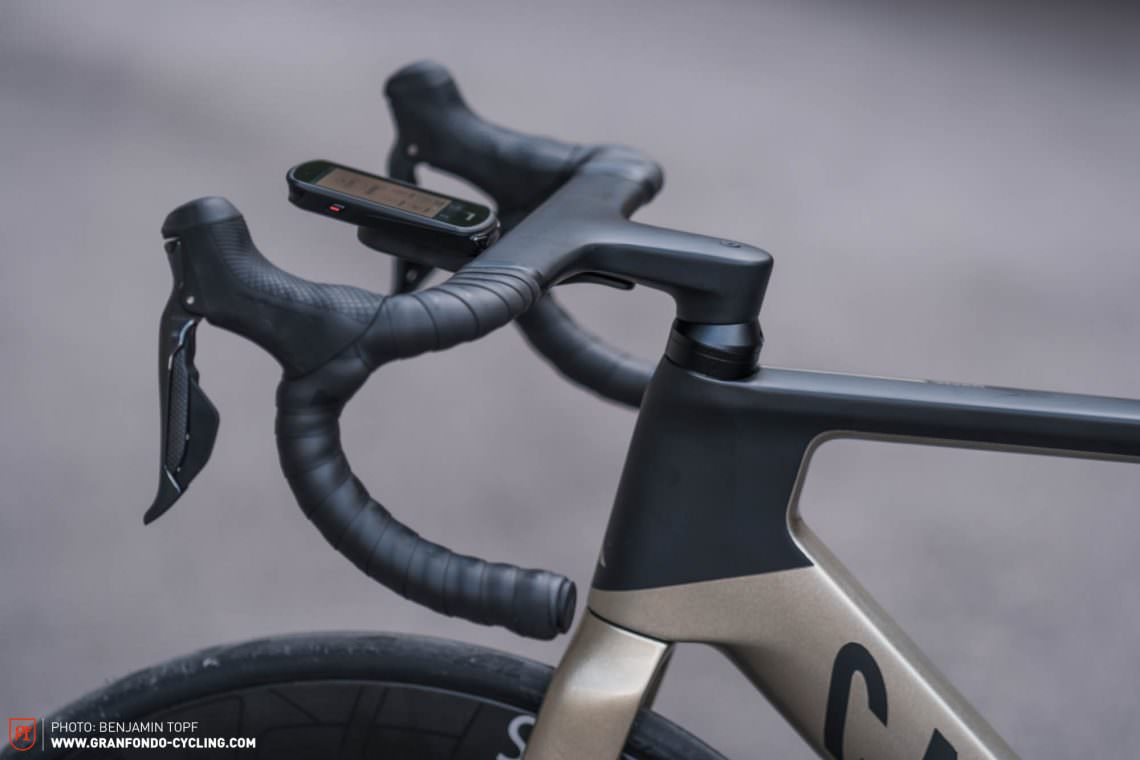
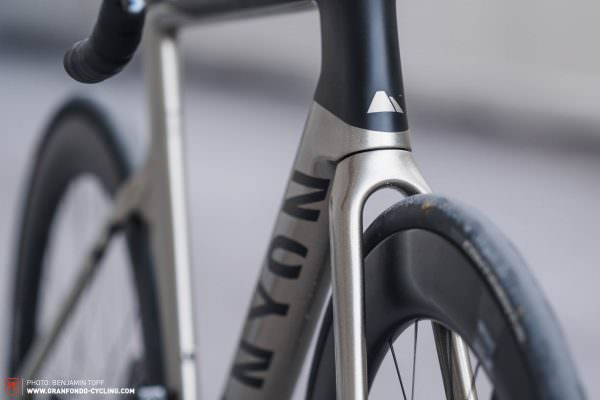
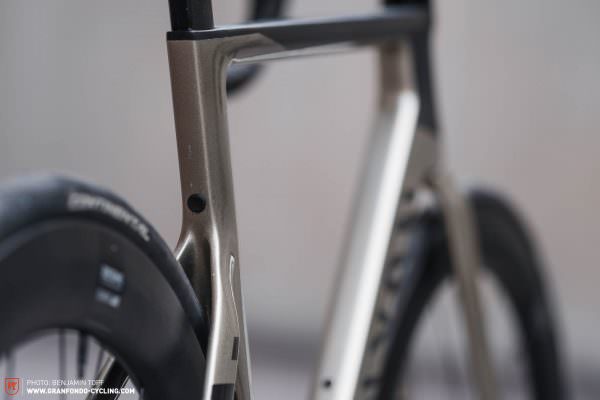
Overview of the Canyon Aeroad models
| Model | Drivetrain | Wheels | Price |
|---|---|---|---|
| Aeroad CFR 9 Di2 | Shimano DURA-ACE Di2 | DT Swiss ARC 1100 Dicut 62 | € 7,499 |
| Aeroad CFR 9 eTap | SRAM RED eTap AXS | DT Swiss ARC 1100 Dicut 62 | € 7,999 |
| Aeroad CFR 9 EPS | Campagnolo Super Record EPS | Campagnolo Bora One 50 | € 8,999 |
| Aeroad CFR Rahmenset | – | – | € 4,299 |
| Aeroad CF SLX 8 Di2 | Shimano Ultegra Di2 | DT Swiss ARC 1400 Dicut 62 | € 4,999 |
| Aeroad CF SLX 8 eTap | SRAM Force eTap AXS | DT Swiss ARC 1400 Dicut 62 | € 5,299 |
| Aeroad CF SL 7 | Shimano 105 | Reynolds AR 58/62 DB | € 3,299 |
| Aeroad CF SL 8 | Shimano Ultegra | Reynolds AR 58/62 DB | € 3,699 |
| Aeroad CF SL 8 WMN | Shimano Ultegra | Reynolds AR 58/62 DB | € 3,699 |
First ride review of the Canyon Aeroad CFR
Standing there, the Aeroad makes no secret of its potential. The shape and aggressive look of the design craves performance and speed while all the cables remain completely hidden inside the frame. Both the 62 mm deep DT Swiss ARC 1100 wheels with the quick-engaging Ratchet EXP freehub and the Shimano DURA-ACE groupset with the 52–36 t chainrings up front and an 11–28 t cassette at the rear are sensible choices for an aero racing bike. On flat terrain or downhill, this setup allows you to carry on pedalling at high speeds and still have a sufficiently small gear available for the climbs. The 700 x 25C Continental GP 5000 tire up front naturally makes sense from an aerodynamic point of view. However, if you don’t care about the marginal differences in aero performance, you can go to 700 x 28C for safer handling – more on that in a moment.

The recessed Canyon SP0046 seat post has a minimal amount of play in the seat tube for added compliance and makes perfect sense regarding comfort, but the adjustment range is limited to XX mm. The new aero cockpit is excellent from an ergonomic point of view and we were never bothered by the recess for the adjustment on the top section. Being able to fold away the handlebar is very practical for shipping and frequent travellers. The possibility of riding the bike with wide handlebars during training and then switching to a more streamlined, narrow handlebar on race day isn’t to be recommended in our opinion. There is so much that is different in a race already and you have to struggle with countless variables that aren’t there during training. An additional variable wouldn’t be helpful; after all, the width of the handlebar has a big influence on the leverage ratio and thus the handling.

Power transfer on the Canyon Aeroad is very direct and not a single watt is lost due to flex in the frame. However, compared to current high-performance all-rounders such as the Specialized Tarmac SL7 or the Trek Émonda, it isn’t the most light-footed. When getting up out of the saddle to accelerate or sprinting to the finish, it’s noticeable that the cockpit is somewhat lacking in stiffness at peak loads. This is no problem for hobbyists and leisure riders. Competitive riders and professionals should keep their fingers crossed that the lower cockpit that Canyon are developing for a more aggressive riding position is going to be stiffer for those Grand Tour events.
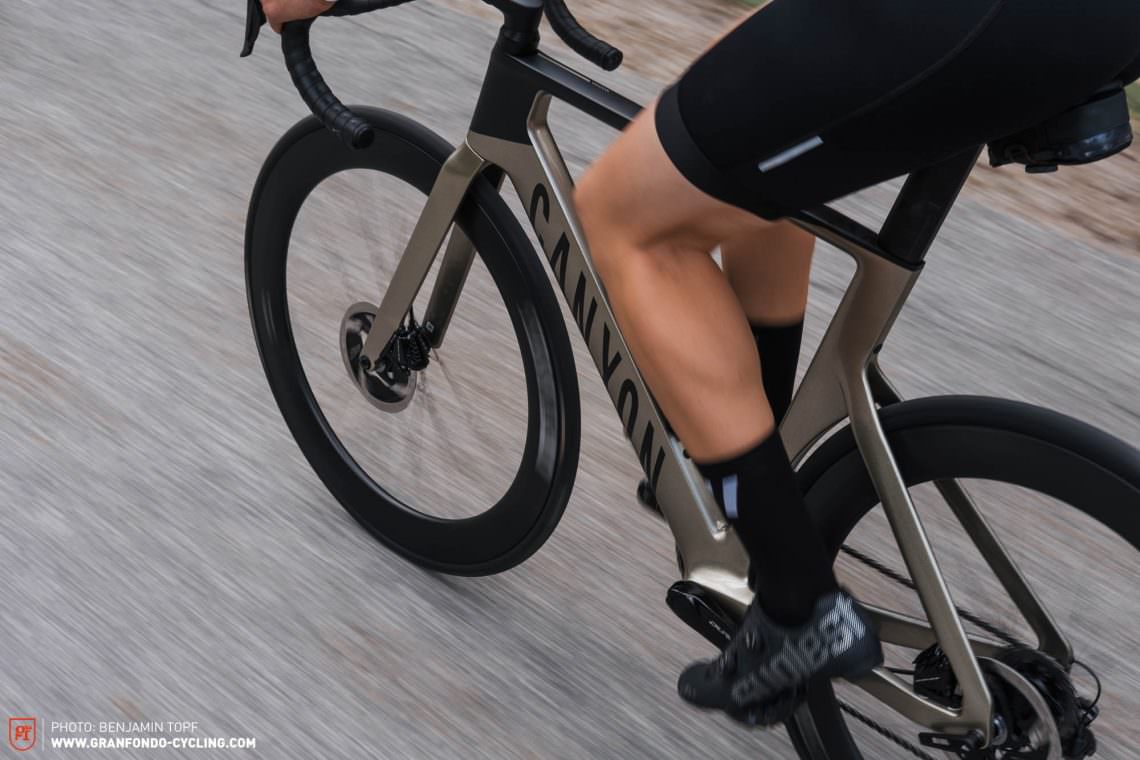
Whether on flat terrain or downhill: the Canyon Aeroad CFR is highly efficient and carries its speed well. The direct power transfer and excellent aerodynamics of the bike combined with the DT Swiss wheels make the Aeroad a very fast bike on flat terrain, best able to play to its strengths in the medium speed range of 20 to 40 km/h. On very steep and long ascents, the bike feels somewhat sluggish, performing better on short, punchy climbs or inclines in the lower percentiles. Overall, the Canyon is a good and efficient climber for an aero bike.
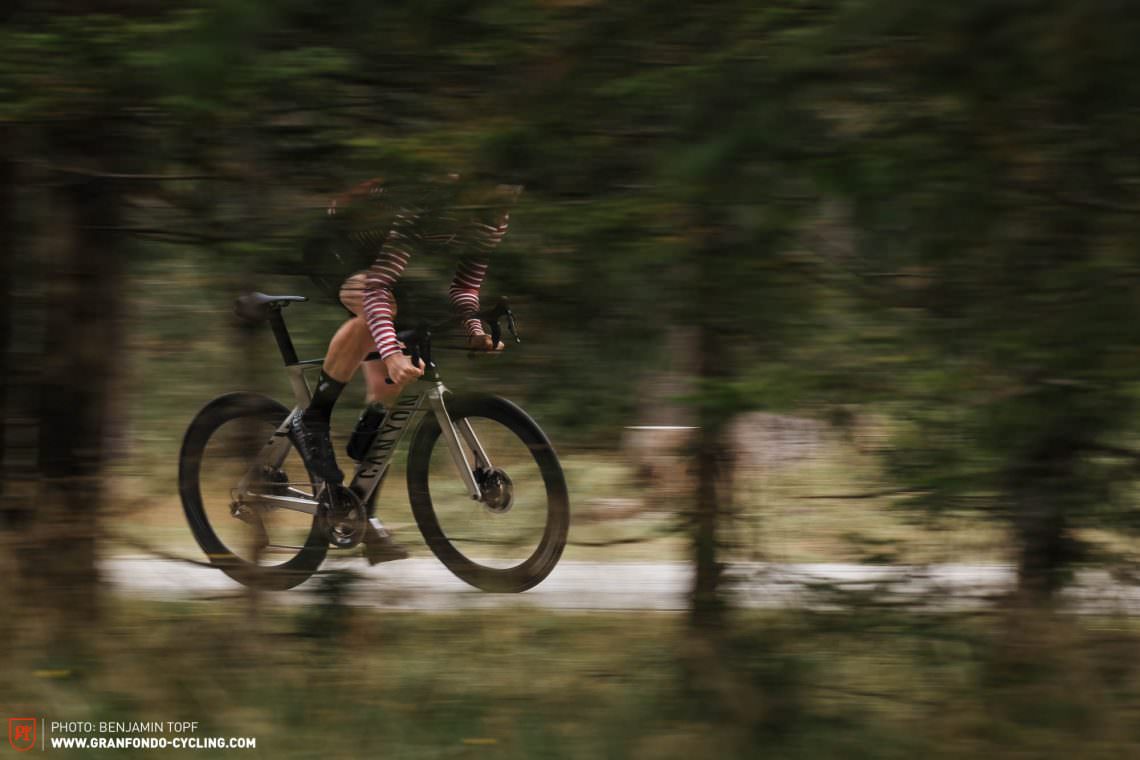
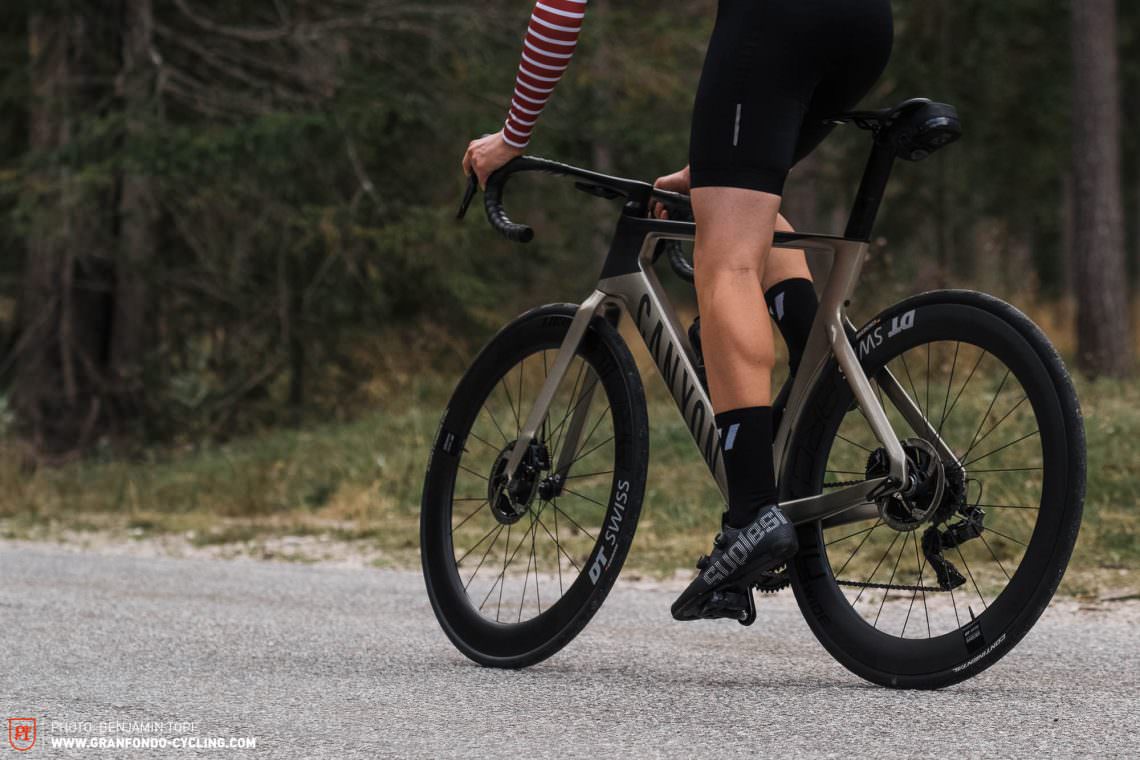
In terms of handling, the Aeroad is among the best. The front and rear are well-coordinated and there is no under- or oversteering to be felt. In general, Canyon have done a great job of balancing the handling between being composed and agile, sure to please both road bike beginners and ambitious racers. The bike responds precisely to steering input and even in sharp bends or windy conditions, you can always correct or change direction.
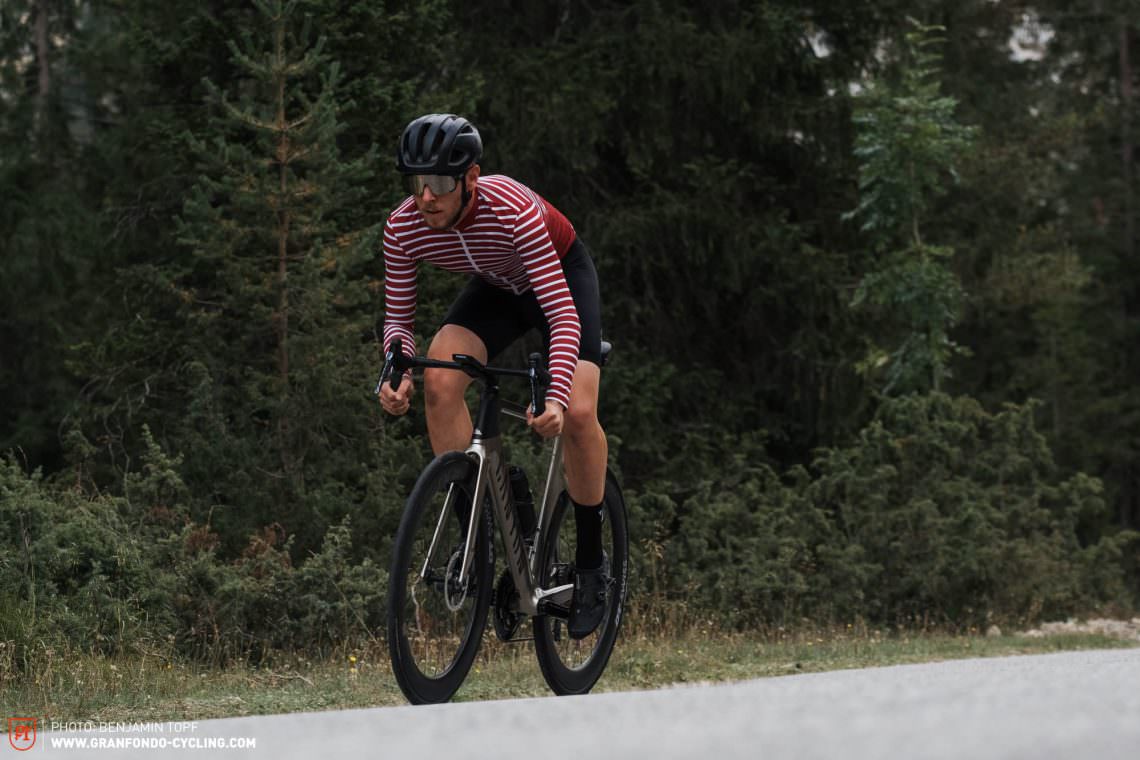
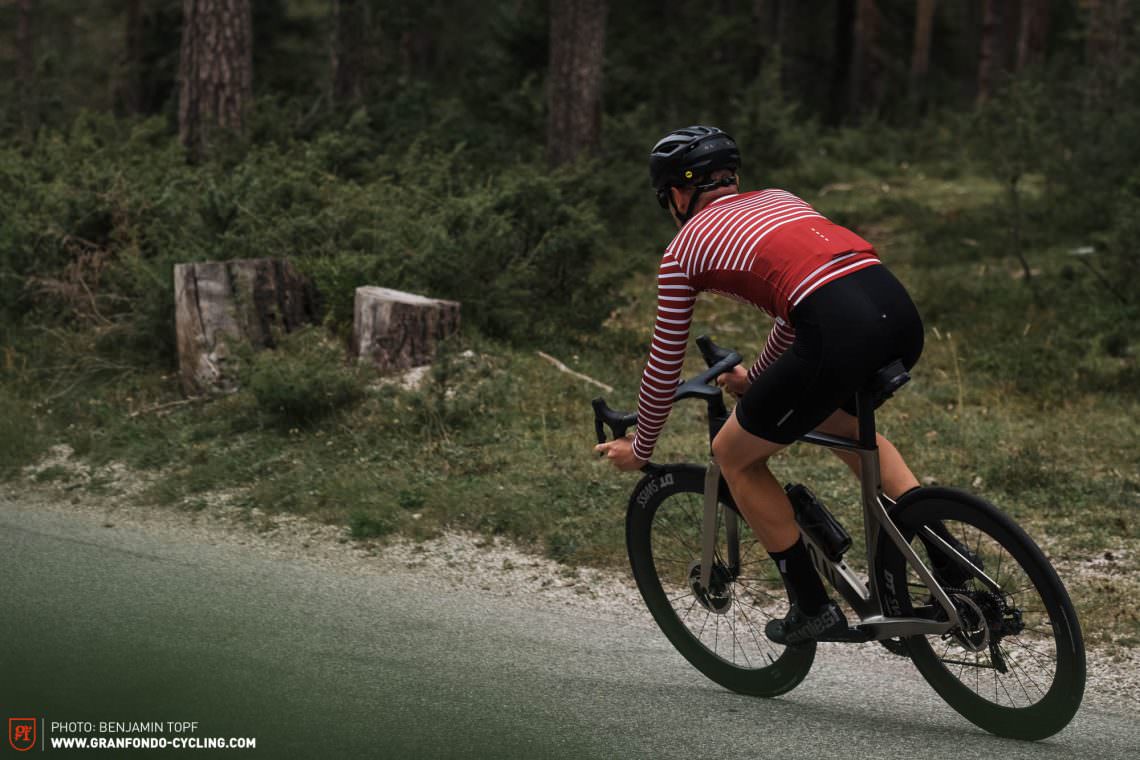
Just looking at the geometry table, you can immediately see that the new generation Aeroad has been designed to be more comfortable. The higher stack and the shorter reach offer a more compact and upright riding position, evidencing Canyon’s attempt to make the bike more suitable for everyday riding. Hobbyists and mortals like us who do not have a pro tour figure benefit enormously from the more relaxed riding position. The vibration dampening is excellent and allows you to ride further, spending several hours in the saddle. The ergonomics and the wide drops of the aero cockpit are a good match for the comfortable geometry and vibration damping of the frame. Who would have thought a few years ago that an aero road bike could be so comfortable to ride?
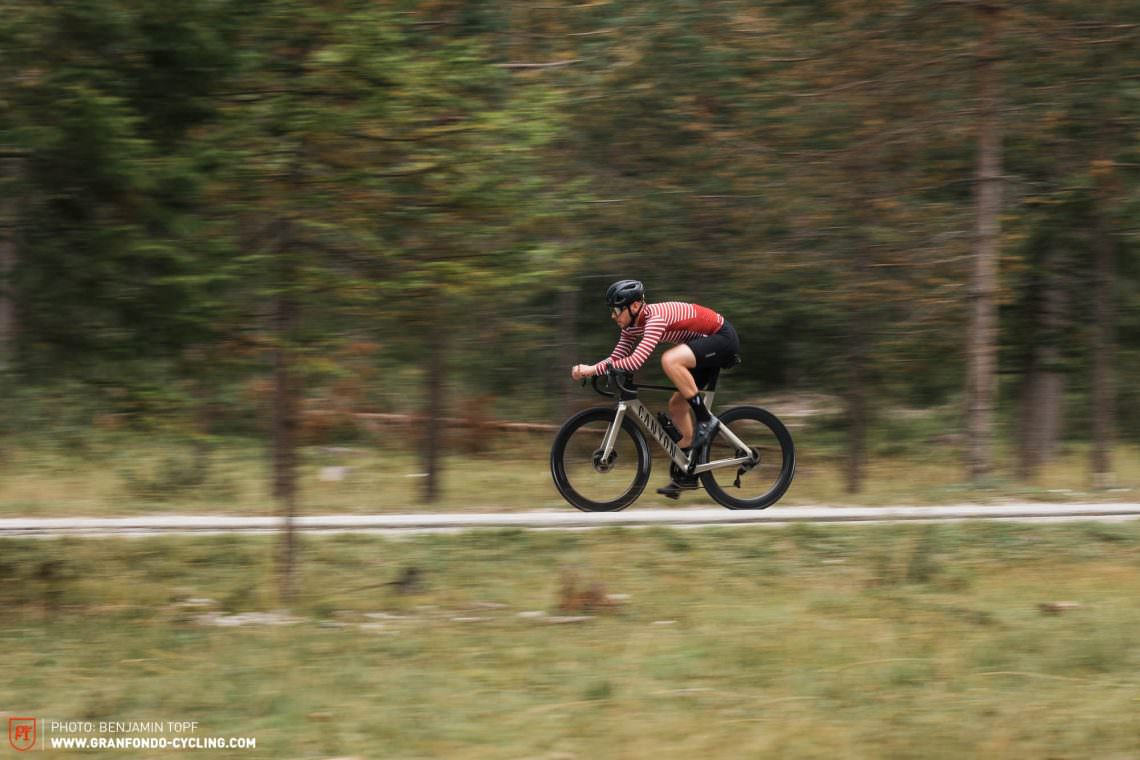
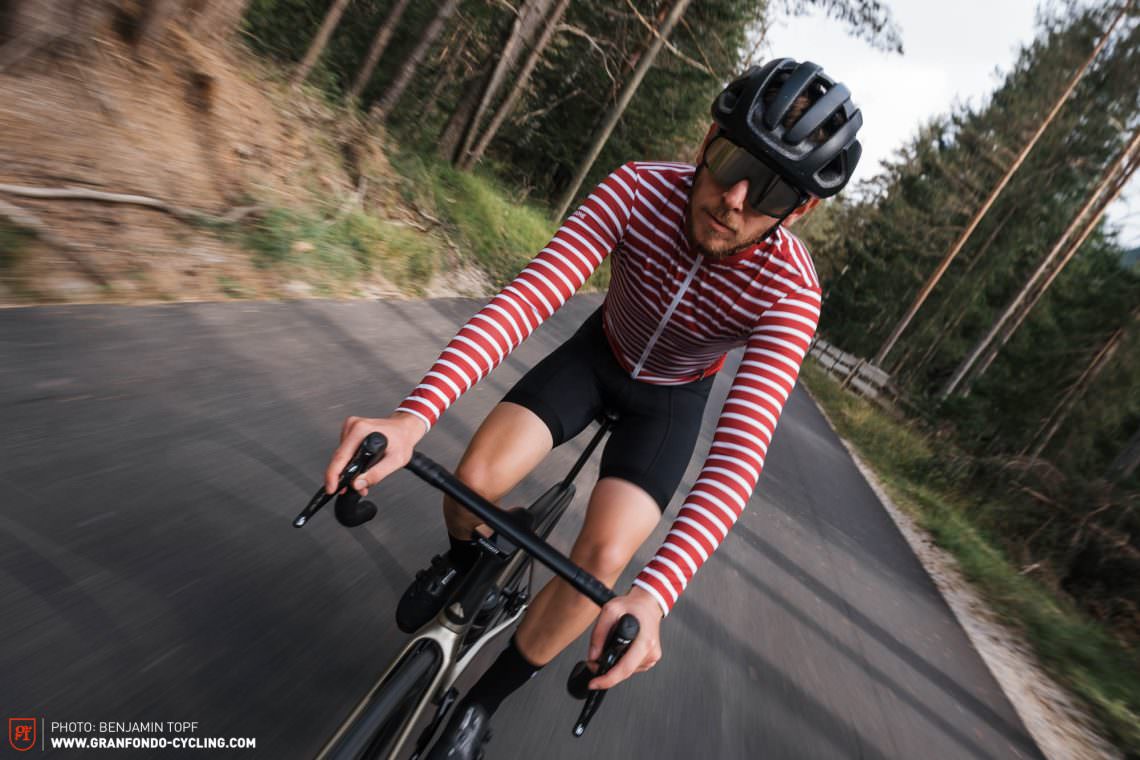
The Shimano DURA-ACE brakes with 160 mm rotors on the front and rear offer great braking performance and, together with the bike’s straight-line stability, they instil you with confidence. With its big profile, the Aeroad is naturally more susceptible to cross-winds. However, if you get caught in a gust, it doesn’t just knock over the front of the bike but pushes the entire bike evenly to the side. That feels a lot less scary and makes the handling more predictable even in windy autumn weather! One shortcoming here is the lack of stiffness in the cockpit: if you have to correct in the corner with a very strong crosswind, the front wheel responds very precisely, though the cockpit feels somewhat vague, which robs you of confidence in these situations.
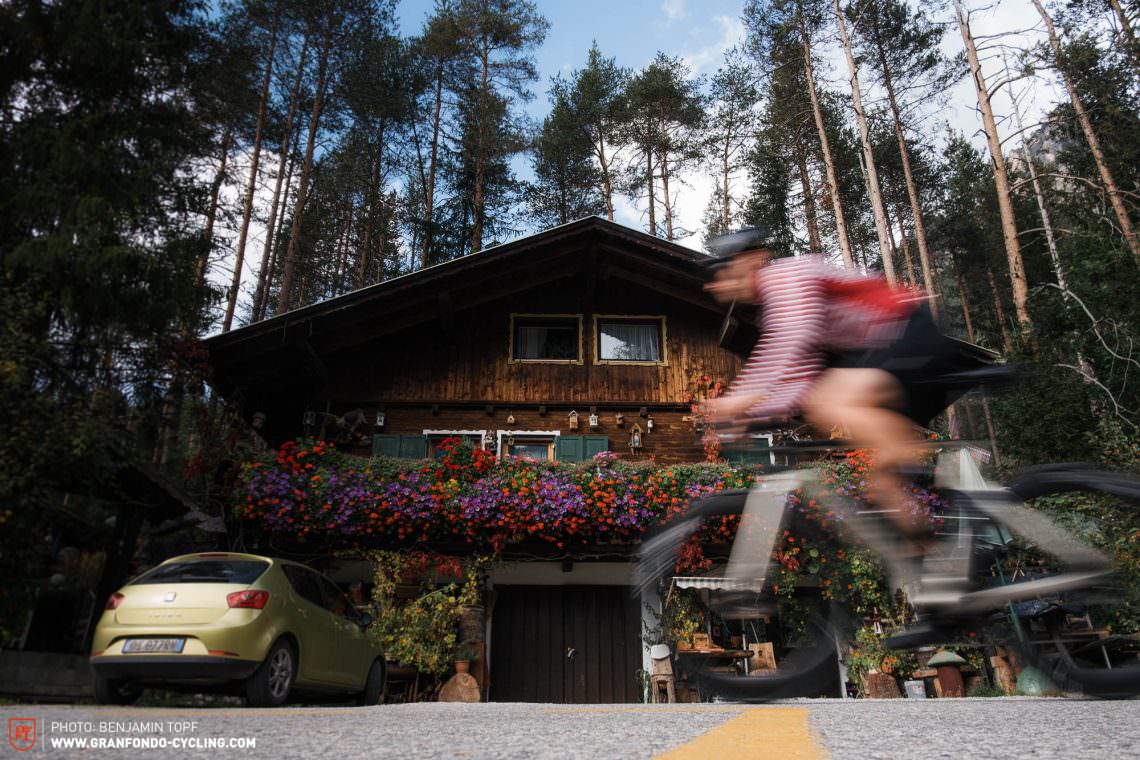

At high speed, the comfort makes the handling feel very good-natured. If you haven’t been paying attention and get caught off guard or the vehicle in front of you simply doesn’t indicate, the Aeroad CFR never gets unsettled, even if you get surprised by a pothole. Of course, it will rattle, but the impact gets diffused instead of being passed on directly to the rider. If the road surface is dirty or damp, the 700 x 25C Continental GP5000 tire on the front quickly reaches its limits. A wider 700 x 28C or 700 x 30C version would offer a lot of advantages, allowing you to run a lower tire pressure and giving you a larger contact surface. Unless you’re regularly entering races, this is an upgrade we would recommend. The triple bosses on the down tube allow you to choose between two positions for the bottle cage. If you want to make the most of the Aeroad’s aerodynamic optimisation, you can mount the bottle lower in the frame. However, riders who don’t want to lean down that far while riding are best advised to attach the bottle cage higher up.
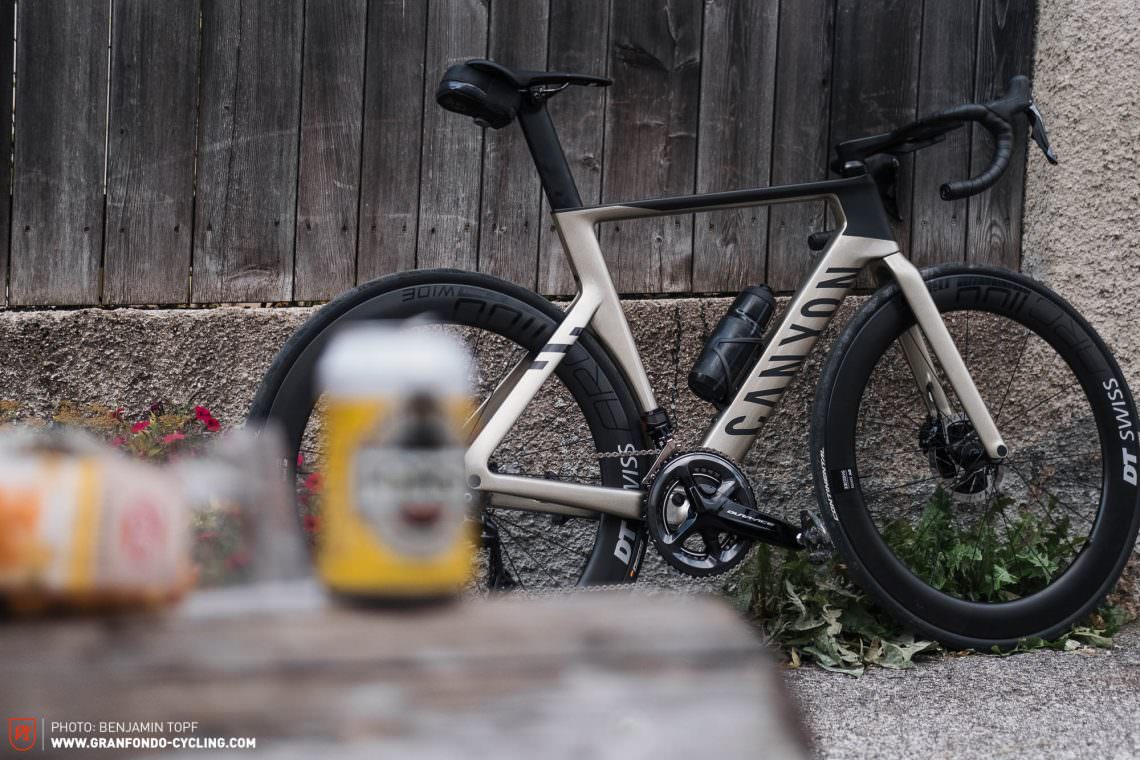

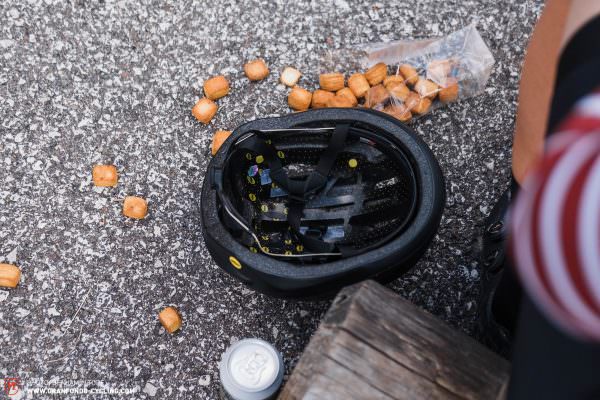

Our conclusion on the Canyon Aeroad CFR
The new Canyon Aeroad CFR is a very efficient and comfortable bike, making it suitable for long rides along with the compact riding position. The excellent vibration damping makes the aero bike much more forgiving for hobby riders than its predecessor. The cockpit isn’t stiff enough for pro tour riders, but weekend warriors will be happy about the compliance offered by the innovative stem-handlebar combination. If you regularly encounter crosswinds or live in mountainous terrain with lots of long and steep climbs, you should look elsewhere. Aero fans who value balanced handling, tire clearance up to 700 x 30C and a large selection of models and sizes will be delighted with the new Canyon Aeroad!
Tops
- balanced comfort
- good straight-line stability
- efficient on flat terrain and on descents
- compact pack size thanks to the foldable handlebar
- many frame sizes and a 650B option for small riders
Flops
- cockpit lacks torsional stiffness when turning hard and sprinting at full power
- In wet conditions and on dirty roads, the 700 x 25C tire up front quickly reaches its limits due to the small contact surface
You can find more information about the Canyon Aeroad CFR at canyon.com and read all our current road bike reviews here.
Did you enjoy this article? If so, we would be stoked if you decide to support us with a monthly contribution. By becoming a supporter of GRAN FONDO, you will help secure a sustainable future for high-quality cycling journalism. Click here to learn more.
Words: Philipp Schwab, Benjamin Topf Photos: Benjamin Topf



